| Bài toán quy hoạch tổng thể về năng lượng quốc gia: “Cởi trói” từ cơ chếQuy hoạch điện VIII: Ưu tiên phát triển năng lượng tái tạoBộ Công Thương công bố các quy hoạch ngành quốc gia về lĩnh vực năng lượng và khoáng sản |
Báo Công Thương trân trọng giới thiệu toàn văn Quyết định số 893/QĐ-TTg của Thủ tướng Chính phủ Phê duyệt Quy hoạch tổng thể về năng lượng quốc gia thời kỳ 2021 - 2030, tầm nhìn đến năm 2050.
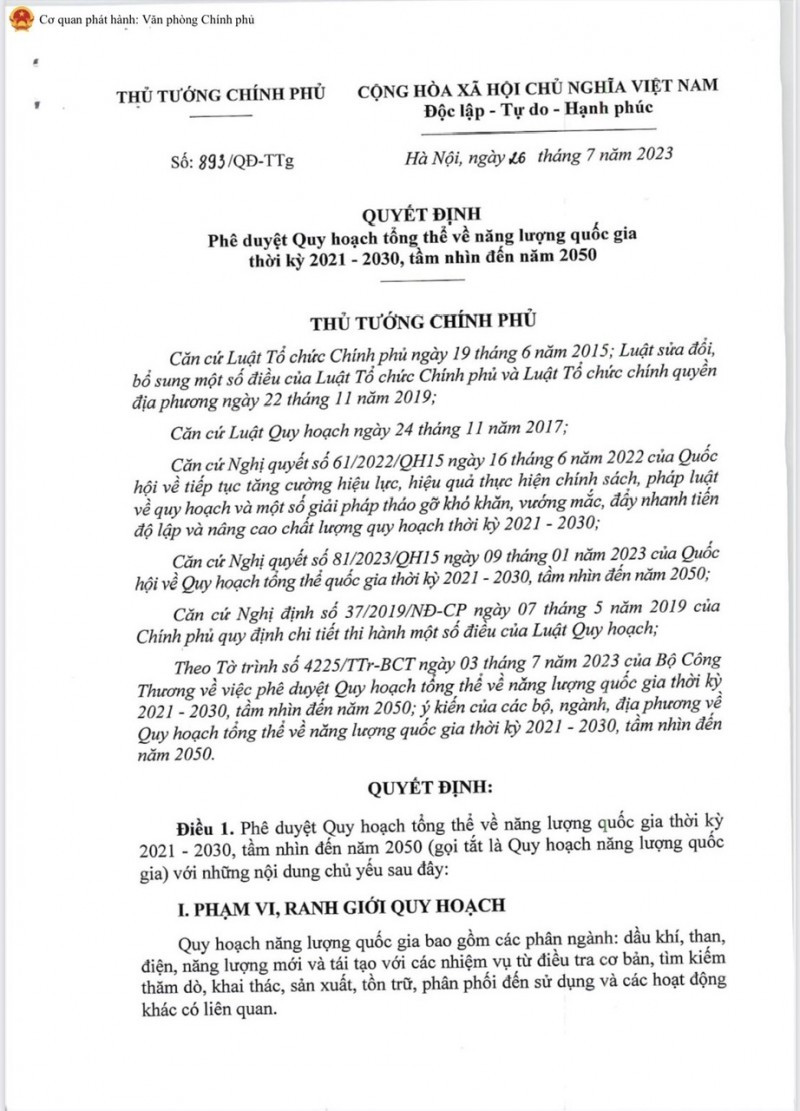 |
| Quyết định số 893/QĐ-TTg của Thủ tướng Chính phủ Phê duyệt Quy hoạch tổng thể về năng lượng quốc gia thời kỳ 2021 - 2030, tầm nhìn đến năm 2050 |
Căn cứ Luật Tổ chức Chính phủ ngày 19 tháng 6 năm 2015; Luật sửa đổi, bổ sung một số điều của Luật Tổ chức Chính phủ và Luật Tổ chức chính quyền địa phương ngày 22 tháng 11 năm 2019;
Căn cứ Luật Quy hoạch ngày 24 tháng 11 năm 2017;
Căn cứ Nghị quyết số 61/2022/QH15 ngày 16 tháng 6 năm 2022 của Quốc hội về tiếp tục tăng cường hiệu lực, hiệu quả thực hiện chính sách, pháp luật về quy hoạch và một số giải pháp tháo gỡ khó khăn, vướng mắc, đẩy nhanh tiến độ lập và nâng cao chất lượng quy hoạch thời kỳ 2021 - 2030;
Căn cứ Nghị quyết số 81/2023/QH15 ngày 09 tháng 01 năm 2023 của Quốc hội về Quy hoạch tổng thể quốc gia thời kỳ 2021 - 2030, tầm nhìn đến năm 2050;
Căn cứ Nghị định số 37/2019/NĐ-CP ngày 07 tháng 5 năm 2019 của Chính phủ quy định chi tiết thi hành một số điều của Luật Quy hoạch;
Theo Tờ trình số 4225/TTr-BCT ngày 03 tháng 7 năm 2023 của Bộ Công Thương về việc phê duyệt Quy hoạch tổng thể về năng lượng quốc gia thời kỳ 2021 - 2030, tầm nhìn đến năm 2050; ý kiến của các bộ, ngành, địa phương về Quy hoạch tổng thể về năng lượng quốc gia thời kỳ 2021 - 2030, tầm nhìn đến năm 2050.
QUYẾT ĐỊNH:
Điều 1. Phê duyệt Quy hoạch tổng thể về năng lượng quốc gia thời kỳ 2021 - 2030, tầm nhìn đến năm 2050 (gọi tắt là Quy hoạch năng lượng quốc gia) với những nội dung chủ yếu sau đây:
I. PHẠM VI, RANH GIỚI QUY HOẠCH
Quy hoạch năng lượng quốc gia bao gồm các phân ngành: dầu khí, than, điện, năng lượng mới và tái tạo với các nhiệm vụ từ điều tra cơ bản, tìm kiếm thăm dò, khai thác, sản xuất, tồn trữ, phân phối đến sử dụng và các hoạt động khác có liên quan.
II. QUAN ĐIỂM, MỤC TIÊU PHÁT TRIỂN
1. Quan điểm phát triển
a) Năng lượng đóng vai trò quan trọng và thiết yếu để phát triển kinh tế - xã hội. Phát triển năng lượng phải đi trước một bước để bảo đảm vững chắc an ninh năng lượng quốc gia và thúc đẩy phát triển nhanh, bền vững đất nước, xây dựng nền kinh tế độc lập tự chủ, nâng cao đời sống Nhân dân và bảo đảm quốc phòng, an ninh. Quy hoạch năng lượng quốc gia phải có tầm nhìn dài hạn, hiệu quả, bền vững và đặt lợi ích quốc gia, dân tộc lên trên hết, trước hết.
b) Quy hoạch năng lượng quốc gia phải đảm bảo tính kế thừa, khách quan, khoa học và tối ưu tổng thể các yếu tố khai thác, sản xuất, phân phối, sử dụng năng lượng tiết kiệm, hiệu quả, phù hợp với không gian và lợi thế so sánh của các vùng, địa phương.
c) Quy hoạch năng lượng quốc gia phải mang tính động và mở, thích ứng với bối cảnh, tình hình chuyển dịch năng lượng trên thế giới. Khai thác và sử dụng có hiệu quả nguồn tài nguyên năng lượng trong nước, kết hợp với xuất, nhập khẩu hợp lý. Phát triển năng lượng đi đôi với bảo vệ tài nguyên, môi trường, sinh thái. Coi phát triển năng lượng tái tạo, năng lượng mới là cơ hội để phát triển tổng thể hệ sinh thái công nghiệp năng lượng.
d) Nhà nước tập trung đầu tư và khuyến khích các thành phần kinh tế để phát triển năng lượng bền vững trên nguyên tắc cạnh tranh lành mạnh và thực hiện cơ chế thị trường đối với các loại năng lượng, bảo đảm hài hòa lợi ích của các chủ thể tham gia đầu tư, sử dụng năng lượng và đáp ứng yêu cầu phát triển của các vùng, địa phương.
đ) Phát triển năng lượng bám sát xu thế phát triển của khoa học - công nghệ trên thế giới, nhất là năng lượng tái tạo, năng lượng mới, sản phẩm phi năng lượng, gắn với chuyển đổi mô hình kinh tế tế đất nước theo hướng tăng trưởng xanh, kinh tế xanh, kinh tế tuần hoàn, kinh tế các-bon thấp. Phát triển đồng bộ, hợp lý và đa dạng các loại hình năng lượng theo lộ trình và các cam kết của Việt Nam trong chuyển đổi năng lượng bền vững, công bằng, công lý.
2. Mục tiêu phát triển
a) Mục tiêu tổng quát
- Bảo đảm vững chắc an ninh năng lượng quốc gia, đáp ứng yêu cầu phát triển kinh tế - xã hội và công nghiệp hóa, hiện đại hóa đất nước, bảo đảm quốc phòng, an ninh, nâng cao đời sống của nhân dân, bảo vệ môi trường sinh thái.
- Thực hiện thành công chuyển đổi năng lượng góp phần quan trọng đáp ứng mục tiêu phát thải ròng bằng “0” vào năm 2050. Ngành năng lượng phát triển hài hoà giữa các phân ngành với hạ tầng đồng bộ và thông minh, đạt trình độ tiên tiến của khu vực, phù hợp với xu thế phát triển khoa học công nghệ của thế giới.
- Phát triển ngành công nghiệp năng lượng độc lập tự chủ; hình thành hệ sinh thái công nghiệp năng lượng tổng thể dựa trên năng lượng tái tạo, năng lượng mới, hướng tới trở thành một trung tâm công nghiệp năng lượng sạch và xuất khẩu năng lượng tái tạo của khu vực.
b) Mục tiêu cụ thể
- Về bảo đảm an ninh năng lượng quốc gia
+ Cung cấp đủ nhu cầu năng lượng trong nước, đáp ứng mục tiêu phát triển kinh tế - xã hội với mức tăng trưởng GDP bình quân khoảng 7%/năm trong giai đoạn 2021 - 2030, khoảng 6,5 - 7,5%/năm trong giai đoạn 2031 - 2050:
. Tổng nhu cầu năng lượng cuối cùng 107 triệu tấn dầu quy đổi vào năm 2030 và đạt 165 - 184 triệu tấn dầu quy đổi vào năm 2050.
. Tổng cung cấp năng lượng sơ cấp 155 triệu tấn dầu quy đổi vào năm 2030 và 294 - 311 triệu tấn dầu quy đổi vào năm 2050.
+ Nâng tổng mức dự trữ xăng dầu cả nước (bao gồm cả dầu thô và sản phẩm) lên 75 - 80 ngày nhập ròng vào năm 2030. Định hướng sau năm 2030, xem xét tăng dần mức dự trữ lên 90 ngày nhập ròng.
- Về chuyển đổi năng lượng công bằng
+ Tỷ trọng năng lượng tái tạo trong tổng năng lượng sơ cấp 15 - 20% năm 2030 và khoảng 80 - 85% năm 2050.
+ Tiết kiệm năng lượng khoảng 8 - 10% vào năm 2030 và khoảng 15 - 20% vào năm 2050 so với kịch bản phát triển bình thường.
+ Mức thải khí nhà kính khoảng 399 - 449 triệu tấn năm 2030 và khoảng 101 triệu tấn vào năm 2050. Mục tiêu cắt giảm khí nhà kính 17 - 26% vào năm 2030 khoảng 90% vào năm 2050 so với kịch bản phát triển bình thường. Hướng tới đạt mức phát thải đỉnh vào năm 2030 với điều kiện các cam kết theo JETP được các đối tác quốc tế thực hiện đầy đủ, thực chất.
- Về phát triển ngành công nghiệp năng lượng
+ Khai thác và sử dụng có hiệu quả nguồn tài nguyên năng lượng trong nước.
. Sản lượng khai thác dầu thô giai đoạn 2021 - 2030 đạt 6,0 - 9,5 triệu tấn/năm. Định hướng giai đoạn 2031 - 2050 đạt 7,0 - 9,0 triệu tấn/năm.
. Sản lượng khai thác khí tự nhiên giai đoạn 2021 - 2030 đạt 5,5 - 15 tỷ m3/năm. Định hướng giai đoạn 2031 - 2050 đạt 10 - 15 tỷ m3/năm.
. Sản lượng khai thác than giai đoạn 2021 - 2030 khoảng 41 - 47 triệu tấn than thương phẩm/năm. Định hướng giai đoạn 2031 - 2050, khoảng 39 triệu tấn than thương phẩm vào năm 2045, khoảng 33 triệu tấn than thương phẩm vào năm 2050. Phấn đấu trước năm 2040 đưa vào vận hành thử nghiệm khai thác tại Bể than sông Hồng và tiến tới khai thác quy mô công nghiệp trước năm 2050 (nếu thử nghiệm thành công).
+ Tập trung phát triển ngành công nghiệp năng lượng hướng tới trở thành trung tâm công nghiệp năng lượng sạch và xuất khẩu năng lượng tái tạo của khu vực, hình thành và phát triển các trung tâm năng lượng tái tạo tại các vùng và các địa phương có lợi thế:
. Phấn đấu đến 2030, hình thành và phát triển một số trung tâm năng lượng sạch bao gồm sản xuất và sử dụng năng lượng, công nghiệp chế tạo thiết bị năng lượng tái tạo, chế biến dầu khí, xây dựng, lắp đặt, dịch vụ liên quan tại Bắc Bộ, Nam Trung Bộ, Nam Bộ khi có các điều kiện thuận lợi.
. Phát triển sản xuất năng lượng mới phục vụ nhu cầu trong nước và xuất khẩu. Phấn đấu đến năm 2030, quy mô công suất sản xuất hydro xanh khoảng 100 - 200 nghìn tấn/năm. Định hướng đến năm 2050 quy mô công suất sản xuất hydro xanh khoảng 10 - 20 triệu tấn/năm.
III. ĐỊNH HƯỚNG VÀ MỤC TIÊU QUY HOẠCH PHÂN NGÀNH NĂNG LƯỢNG
1. Phân ngành dầu khí
a) Lĩnh vực tìm kiếm, thăm dò, khai thác dầu khí
- Tìm kiếm, thăm dò dầu khí
+ Định hướng:
. Đẩy mạnh công tác điều tra cơ bản và tìm kiếm thăm dò dầu khí ở trong nước nhằm gia tăng trữ lượng dầu khí; có chính sách cụ thể khuyến khích các công ty dầu khí lớn từ những nước có vị thế trên thế giới tham gia tại những vùng nước sâu, xa bờ, vùng nhạy cảm, gắn với bảo vệ chủ quyền biển đảo quốc gia.
. Tích cực thăm dò tại các khu vực nước nông, truyền thống, nghiên cứu thăm dò các đối tượng tìm kiếm thăm dò mới, các bể trầm tích mới và các dạng hydrocarbon phi truyền thống (tầng chứa chặt sít, khí than, khí nông, khí đá phiến sét, khí hydrate,…) để bổ sung trữ lượng phục vụ khai thác lâu dài.
. Đối với dầu khí đá phiến, khí hydrate (băng cháy), tích cực nghiên cứu, đánh giá sâu hơn về địa chất và áp dụng tiến bộ khoa học – kỹ thuật để mở rộng phạm vi khảo sát; sớm triển khai đánh giá tổng thể, đẩy nhanh khai thác thử nghiệm khi điều kiện cho phép.
. Tập trung đẩy mạnh công tác tìm kiếm, thăm dò các Bể Cửu Long, Nam Côn Sơn, Mã Lai - Thổ Chu, Sông Hồng; song song với công tác tận thăm dò, thăm dò mở rộng đối tượng truyền thống nhằm bổ sung trữ lượng và đưa vào phát triển khai thác sử dụng hệ thống hạ tầng cơ sở có sẵn; dần chuyển hướng thăm dò, đánh giá khả năng khai thác dầu khí từ các đối tượng phi truyền thống. Tiếp tục mở rộng thăm dò tại khu vực nước sâu, xa bờ như khu vực các Bể Phú Khánh, Tư Chính - Vũng Mây,...
. Điều tra cơ bản, bổ sung tài liệu tìm kiếm, thăm dò những vùng có mức độ nghiên cứu còn thưa, khu vực nước nông chuyển tiếp bên cạnh tiếp tục khảo sát đan dày địa chấn 2D với mạng lưới tuyến dày hơn; nghiên cứu, đánh giá triển vọng các cấu tạo đã phát hiện, khoan thăm dò những cấu tạo triển vọng nhất tại những vùng nước sâu hơn 200 m và xa bờ.
. Tiến hành thu nổ xử lý lại/thu nổ bổ sung tài liệu địa chấn 2D/3D theo công nghệ mới, tiên tiến nhằm đồng bộ hóa tài liệu địa chấn chất lượng cao ở phạm vi toàn bể/khu vực; từng bước triển khai công tác điều tra cơ bản, nghiên cứu các vùng có triển vọng khí hydrate khu vực Nam Côn Sơn và Tư Chính - Vũng Mây và nghiên cứu tiềm năng dầu khí phi truyền thống (tầng chứa chặt khít, khí than, khí nông, khí đá phiến sét, khí hydrate,...) khu vực các Bể Sông Hồng, Cửu Long và Nam Côn Sơn.
. Tiếp tục đo đạc khảo sát, thu thập các số liệu địa chấn - địa vật lý trong và ngoài nước để nghiên cứu đặc điểm cấu trúc địa chất và đánh giá tiềm năng dầu khí cũng như khí hydrate khu vực Bể Trường Sa - Hoàng Sa khi điều kiện thuận lợi.
. Tập trung các hoạt động thăm dò trong 3 khu vực: Nam Bể Sông Hồng, Trung tâm bể Nam Côn Sơn và Bể Cửu Long.
. Tăng thu nổ và xử lý lại địa chấn 2D/3D, đặc biệt ở các khu vực trọng tâm để gia tăng tài nguyên.
+ Mục tiêu cụ thể:
. Trong mỗi chu kỳ 5-10 năm đánh giá tổng thể tiềm năng và trữ lượng dầu khí trên đất liền và thềm lục địa Việt Nam.
. Gia tăng trữ lượng: giai đoạn 2021 - 2030: 16 - 22 triệu tấn quy dầu/năm, hệ số bù 0,9 - 1,1. Định hướng giai đoạn 2031 - 2050: 16 - 27 triệu tấn quy dầu/năm, hệ số bù 0,6 - 1,0.
- Khai thác dầu khí
+ Định hướng:
. Thực hiện tốt công tác quản lý mỏ, tối ưu và duy trì khai thác có hiệu quả các mỏ dầu và khí đã đưa vào khai thác.
. Phát triển và đưa các mỏ đã có phát hiện dầu khí vào khai thác hợp lý và có hiệu quả để sử dụng tài nguyên dầu khí trong nước lâu dài, tập trung tại các khu vực tiềm năng như nước sâu xa bờ, đối tượng dầu khí phi truyền thống. Xây dựng phương án hợp tác, cơ chế khai thác chung tại những vùng chồng lấn.
. Tiếp tục đẩy mạnh nghiên cứu áp dụng các giải pháp nâng cao thu hồi dầu tại các mỏ.
. Thúc đẩy khai thác mỏ nhỏ/cận biên bằng cách áp dụng công nghệ mới, kết nối để sử dụng tối đa cơ sở hạ tầng đã đầu tư và chính sách khuyến khích của Nhà nước.
. Tập trung nguồn lực đẩy nhanh tiến độ hai dự án khí lớn: dự án khí Lô B&48/95 và 52/97 và dự án khí Cá Voi Xanh.
+ Mục tiêu cụ thể:
. Dầu thô trong nước: sản lượng khai thác dầu thô giai đoạn 2021 - 2030 đạt 6,0 - 9,5 triệu tấn/năm. Định hướng giai đoạn 2031 - 2050 đạt 7,0 - 9,0 triệu tấn/năm.
. Khí thiên nhiên về bờ: sản lượng khai thác khí giai đoạn 2021-2030 đạt 5,5 - 15,0 tỷ m3/năm. Định hướng giai đoạn 2031 - 2050 đạt 10,0 - 15,0 tỷ m3/năm.
b) Lĩnh vực công nghiệp khí
- Định hướng:
+ Phát triển lĩnh vực công nghiệp khí hoàn chỉnh, đồng bộ tất cả các khâu: khai thác - thu gom - vận chuyển - chế biến - dự trữ - phân phối khí và xuất nhập khẩu sản phẩm khí.
+ Phát triển thị trường tiêu thụ khí theo cơ chế thị trường có sự điều tiết của Nhà nước và từng bước hội nhập với thị trường khí khu vực và thế giới.
+ Vận hành an toàn và hiệu quả các hệ thống đường ống thu gom, vận chuyển, xử lý, chế biến khí hiện hữu. Tiếp tục khai thác tối ưu, thu gom tối đa khối lượng khí từ các mỏ khí có trữ lượng lớn, đồng thời, tăng cường thu gom các mỏ khí có trữ lượng nhỏ, các mỏ biên nhằm đảm bảo thu gom tối đa các nguồn khí thông qua các đường ống sẵn có tại các Bể Sông Hồng, Cửu Long, Nam Côn Sơn và Mã Lai - Thổ Chu.
+ Đẩy mạnh triển khai các dự án phát triển mỏ, khai thác, thu gom khí bằng hệ thống đường ống, bằng tàu nén khí (Floating CNG) tại các mỏ chưa có hệ thống thu gom, mở rộng phạm vi thu gom khí (CNG, LNG,...) từ các mỏ không có khả năng thu gom khí bằng đường ống (mỏ nhỏ, có giá trị cận biên, khí có hàm lượng CO₂ cao,... đặc biệt là các mỏ khí đồng hành).
+ Đầu tư xây dựng nhà máy xử lý khí, đường ống vận chuyển khí đến nhà máy xử lý khí để cung cấp khí cho các trung tâm nhiệt điện, các nhà máy chế biến khí và các hộ tiêu thụ công nghiệp.
+ Tăng cường đầu tư cơ sở hạ tầng, đẩy mạnh và khuyến khích các nhà thầu đầu tư xây dựng hệ thống thu gom khí ngoài khơi để kết nối với các hệ thống đường ống hiện có. Triển khai xây dựng đường ống nhập khẩu khí từ các mỏ của các nước lân cận vào hệ thống đường ống hiện có và đường ống sẽ xây dựng mới trong tương lai. Tiến hành hợp tác với các đối tác trong và ngoài nước cùng đầu tư nghiên cứu, áp dụng các giải pháp công nghệ hợp lý nhằm tận thu khí đang bị đốt bỏ tại các giàn khai thác, tách các sản phẩm có giá trị cao như ethane, propane/butane (LPG), condensate tại các nhà máy xử lý khí nhằm nâng cao giá trị nguồn tài nguyên dầu khí. Xây dựng hạ tầng để thu gom và vận chuyển nguồn khí từ các mỏ đang khai thác.
+ Triển khai xây dựng kho cảng LNG và nhập khẩu khí thiên nhiên (LNG, CNG) để phục vụ nhu cầu sản xuất điện, công nghiệp và dân dụng. Tìm kiếm các nguồn khí nhập khẩu từ Malaysia, Indonesia, Brunei,... thông qua việc sử dụng các cơ sở hạ tầng sẵn có, đồng thời, thúc đẩy quan hệ quốc tế để có được các nguồn nhập khẩu khí (LNG, CNG) từ các nước có nguồn cung và thuận lợi về thương mại, vận tải, sẵn sàng nhập khẩu LNG từ năm 2023.
+ Hoàn thiện hệ thống đồng bộ cung cấp khí thiên nhiên, LNG, CNG, LPG, DME trên phạm vi toàn quốc đáp ứng nhu cầu nhiên liệu cho năng lượng, phân bón, công nghiệp, giao thông vận tải và sinh hoạt dân dụng. Tiếp tục phát triển hệ thống vận chuyển đường ống khí thiên nhiên thấp áp cho nhu cầu sử dụng của các hộ tiêu thụ công nghiệp dọc tuyến ống dẫn khí, khu dân cư ở các thành phố lớn.
+ Tập trung nguồn lực đẩy nhanh tiến độ triển khai các dự án công nghiệp khí, gồm: dự án kho cảng nhập LNG Thị Vải (giai đoạn 1 công suất 1 triệu tấn/năm, dự kiến hoàn thành năm 2023; giai đoạn 2 nâng công suất lên 3 triệu tấn/năm, dự kiến hoàn thành sau năm 2025); dự án kho cảng nhập LNG Sơn Mỹ (công suất 3,6 triệu tấn/năm, dự kiến hoàn thành giai đoạn 1 năm 2026 -2027); dự án khí Lô B (công suất 6,4 tỷ m3/năm, dự kiến hoàn thành năm 2027); chuỗi dự án khí Cá Voi Xanh (công suất 7 - 9 tỷ m3/năm, dự kiến hoàn thành trước năm 2030).
- Mục tiêu cụ thể:
+ Thu gom tối đa khí đồng hành của các lô/mỏ mà PVN và các nhà thầu dầu khí khai thác tại Việt Nam.
+ Xây dựng cơ sở hạ tầng đảm bảo đủ năng lực cung cấp 100% nhu cầu khí nguyên liệu cho điện và cho các hộ tiêu thụ khác trong đó năng lực nhập khẩu khí tự nhiên hóa lỏng đạt khoảng 15,7 - 18,2 tỷ m3 vào năm 2030 và định hướng khoảng 10,6 - 12,2 tỷ m3 vào năm 2050.
+ Phát triển thị trường khí đạt khoảng 30,7 - 33,2 tỷ m3/năm vào năm 2030. Định hướng khoảng 20 - 22 tỷ m3 vào năm 2050.
c) Lĩnh vực chế biến dầu khí
- Định hướng:
+ Phát triển lĩnh vực chế biến dầu khí để đáp ứng nhu cầu trong nước, hướng tới mục tiêu xuất khẩu. Thu hút nguồn vốn đầu tư nước ngoài, nguồn vốn đầu tư từ xã hội để phát triển lĩnh vực chế biến dầu khí theo nguyên tắc bảo đảm hài hòa lợi ích quốc gia và nhà đầu tư.
+ Tập trung phát triển tích hợp lọc dầu với hóa dầu, hóa chất để nâng cao giá trị gia tăng sản phẩm dầu khí, tạo ra các nguyên, nhiên, vật liệu để phục vụ phát triển sản xuất công nghiệp trong nước, hướng tới xuất khẩu, giảm tỷ trọng nhập siêu.
+ Nghiên cứu thực hiện việc đầu tư cải tiến/nâng cấp để phù hợp với xu hướng thay đổi thị trường sản phẩm cũng như các yêu cầu về tiêu chuẩn môi trường ngày càng khắt khe (như các nhà máy lọc dầu,...). Nghiên cứu đầu tư phát triển các sản phẩm mới hóa dầu/hóa chất chuyên dụng có giá trị gia tăng cao.
+ Duy trì vận hành an toàn, ổn định, hiệu quả các nhà máy lọc hóa dầu hiện hữu, các nhà máy chế biến condensate; đa dạng hóa sản phẩm của các nhà máy.
+ Tận dụng vị trí địa lý và cơ sở hạ tầng đã được đầu tư để phát triển các nhà máy theo chuỗi chế biến sâu, các nhà máy và cơ sở cung cấp dịch vụ. Nghiên cứu, đầu tư xây dựng các chuỗi vận chuyển – tồn chứa – sản xuất và kinh doanh dầu thô/xăng dầu tại khu vực Nhà máy lọc dầu hiện hữu. Triển khai hoàn thành Dự án nâng cấp mở rộng Nhà máy lọc dầu Dung Quất, hình thành Trung tâm năng lượng và lọc hóa dầu quốc gia tại Khu kinh tế Dung Quất.
+ Nghiên cứu đầu tư các dự án hóa dầu/hóa chất mới gắn với các trung tâm chế biến dầu khí.
+ Nghiên cứu sản xuất hydro, sản xuất năng lượng tái tạo: tích hợp với nhà máy lọc hóa dầu, hóa chất, phân bón, sử dụng làm nhiên liệu cho pin nhiên liệu, định hướng hoàn thiện chuỗi giá trị hydro khâu sau.
- Mục tiêu cụ thể:
+ Sản lượng sản phẩm xăng dầu sản xuất đáp ứng tối thiểu 70% nhu cầu trong nước.
+ Vận hành các nhà máy an toàn, ổn định với công suất thiết kế, đồng thời tiếp tục cải tiến, tối ưu hóa, đa dạng hóa sản phẩm và thực hiện tiết giảm chi phí.
d) Lĩnh vực vận chuyển, tồn trữ và phân phối sản phẩm dầu khí
- Định hướng:
+ Phát triển hợp lý hệ thống phân phối xăng dầu nhằm bảo đảm lưu thông và bình ổn thị trường tiêu thụ, đáp ứng toàn bộ nhu cầu tiêu thụ xăng dầu trong nước.
+ Tăng cường các giải pháp gia tăng dự trữ về dầu thô và xăng dầu.
+ Khuyến khích sử dụng rộng rãi nhiên liệu sinh học, nhiên liệu mới nhằm giảm thiểu sự phụ thuộc vào nhiên liệu hóa thạch và bảo vệ môi trường.
- Mục tiêu cụ thể:
+ Đến năm 2030 nâng tổng mức dự trữ xăng dầu cả nước (bao gồm cả dầu thô và sản phẩm) lên 75 - 80 ngày nhập ròng, trong đó: Dự trữ sản xuất: 20 - 25 ngày sản xuất; Dự trữ quốc gia: 15 - 20 ngày nhập ròng; Dự trữ thương mại: 30 - 35 ngày nhập ròng.
+ Sau năm 2030, xem xét tăng dần mức dự trữ lên 90 ngày nhập ròng.
2. Phân ngành than
a) Công tác thăm dò than
- Định hướng:
+ Tập trung thăm dò nâng cấp tài nguyên than hiện có đảm bảo độ tin cậy phục vụ thiết kế khai thác và đẩy mạnh việc thăm dò các mỏ mới, đảm bảo công tác thăm dò luôn đi trước một bước.
+ Đổi mới và áp dụng công nghệ thăm dò tiên tiến, đặc biệt đối với những khu vực nằm ở độ sâu lớn, điều kiện địa chất phức tạp; tiếp tục tìm kiếm đối tác nghiên cứu đầu tư lựa chọn công nghệ, phương pháp thăm dò thích hợp để thăm dò Bể than sông Hồng.
- Mục tiêu cụ thể:
+ Giai đoạn 2021 - 2030: hoàn thành các đề án thăm dò giai đoạn trước và thực hiện các đề án thăm dò mới với khối lượng khoảng 1.071÷1.328 nghìn mét khoan tại Bể than Đông Bắc, khoảng 102÷131 nghìn mét khoan tại các mỏ than nội địa và mỏ than địa phương. Thực hiện công tác thăm dò trong ranh giới dự kiến khai thác thử nghiệm tại Bể than sông Hồng.
+ Định hướng giai đoạn 2031 - 2050: hoàn thành các đề án thăm dò giai đoạn trước và thực hiện các đề án thăm dò mới với khối lượng khoảng 773÷943 nghìn mét khoan tại Bể than Đông Bắc, khoảng 7÷10 nghìn mét khoan tại các mỏ than nội địa và mỏ than địa phương; thực hiện các đề án thăm dò tại Bể than sông Hồng.
b) Công tác khai thác than
- Định hướng:
+ Tập trung phát triển, duy trì các mỏ hầm lò sản lượng lớn theo tiêu chí “Mỏ xanh, Mỏ hiện đại, Mỏ sản lượng cao, Mỏ an toàn”. Phát triển các mỏ khai thác lộ thiên theo hướng nâng cao hệ số bóc giới hạn, phù hợp với điều kiện kỹ thuật + kinh tế và quy hoạch liên quan; thực hiện công tác đổ thải đất đá theo hướng sử dụng tối đa bãi thải trong.
+ Liên thông các mỏ sản lượng nhỏ có điều kiện địa chất, địa lý, hạ tầng phù hợp thành các mỏ có sản lượng lớn.
+ Phát triển sản lượng khai thác theo hướng bền vững, hiệu quả; khai thác an toàn, tiết kiệm, hiệu quả nguồn tài nguyên than, bao gồm cả phần tài nguyên than tại các khu vực trụ bảo vệ các công trình và phần tài nguyên than tổn thất còn lại sau khi đã kết thúc khai thác hầm lò.
+ Đầu tư một số đề tài/đề án/dự án nghiên cứu khai thác thử nghiệm tại Bể than sông Hồng để lựa chọn công nghệ khai thác hợp lý.
+ Khuyến khích các địa phương có các điểm than trữ lượng nhỏ đầu tư khai thác để phục vụ nhu cầu tại chỗ; chú trọng công tác khai thác than bùn làm nhiên liệu và phân bón phục vụ nhu cầu của ngành nông, lâm nghiệp.
+ Nghiên cứu khai thác và sử dụng đất đá thải mỏ phục vụ san lấp mặt bằng nhằm thúc đẩy phát triển kinh tế tuần hoàn, cải tạo phục hồi môi trường khai thác; nghiên cứu chế biến đất đá thải mỏ để làm vật liệu xây dựng nhằm tăng hiệu quả của công tác khai thác, sử dụng đất đá thải mỏ.
+ Tăng cường nghiên cứu và áp dụng công nghệ tiên tiến trong khai thác than, nhất là các mỏ than lớn, mỏ than gần khu dân cư, thành thị, ven biển,...
+ Đẩy mạnh hoạt động tìm kiếm cơ hội đầu tư nước ngoài để thăm dò, khai thác than (loại than Việt Nam phải nhập khẩu) bảo đảm hiệu quả và phù hợp quy định của pháp luật.
- Mục tiêu cụ thể:
+ Giai đoạn 2021 - 2030: Phấn đấu sản lượng than nguyên khai toàn ngành (không bao gồm than bùn) khoảng 46 - 53 triệu tấn/năm, tương ứng khoảng 41 - 47 triệu tấn than thương phẩm/năm.
+ Định hướng giai đoạn 2031 - 2050: sản lượng than nguyên khai toàn ngành giảm dần từ 53 triệu tấn vào năm 2030 (tương ứng khoảng 47 triệu tấn than thương phẩm) xuống khoảng 44 triệu tấn vào năm 2045 (tương ứng khoảng 39 triệu tấn than thương phẩm) và khoảng 36 triệu tấn vào năm 2050 (tương ứng khoảng 33 triệu tấn than thương phẩm). Phấn đấu trước năm 2040 đưa vào vận hành thử nghiệm khai thác tại Bể than sông Hồng và tiến tới khai thác quy mô công nghiệp trước năm 2050 (nếu thử nghiệm thành công).
c) Công tác sàng tuyển, chế biến than
- Định hướng:
+ Duy trì, cải tạo các nhà máy sàng tuyển, trung tâm chế biến than hiện có kết hợp việc duy trì hợp lý các cụm sàng mỏ; tiếp tục đầu tư xây dựng mới nhà máy sàng tuyển tập trung theo từng khu vực để đảm bảo yêu cầu chế biến than và nhu cầu thị trường.
+ Chế biến than trong nước kết hợp với pha trộn than nhập khẩu theo hướng tối đa chủng loại than cho sản xuất điện; đa dạng hoá sản phẩm đáp ứng nhu cầu sử dụng trong nước phù hợp theo thị trường.
+ Đẩy mạnh nghiên cứu, ứng dụng khoa học công nghệ trong công tác chế biến than (dùng cho luyện kim, khí hóa than để sản xuất các loại sản phẩm khí phù hợp phục vụ các ngành năng lượng và công nghiệp,...) nhằm đa dạng hóa sản phẩm không dùng cho mục đích năng lượng chế biến từ than đáp ứng yêu cầu về bảo vệ môi trường và giảm phát thải khí nhà kính.
+ Thực hiện công tác sàng tuyển, chế biến than tại các mỏ địa phương quản lý phù hợp với nhu cầu tiêu thụ, công suất các dự án mỏ, đáp ứng yêu cầu về bảo vệ môi trường. Xây dựng các cơ sở chế biến than bùn tập trung với công nghệ tiên tiến theo hướng ưu tiên chế biến ra các sản phẩm có chất lượng để sử dụng trong ngành nông, lâm nghiệp đáp ứng yêu cầu về bảo vệ môi trường.
- Mục tiêu cụ thể:
+ Giai đoạn 2021 - 2030:
. Xây dựng mới các nhà máy, trung tâm sàng tuyển, chế biến than tập trung nhằm nâng cao năng lực sàng tuyển, chế biến than khu vực Uông Bí thêm khoảng 4,0 - 5,0 triệu tấn/năm so với hiện nay; xây dựng mới xưởng sàng có công suất khoảng 1,5 triệu tấn/năm tại khu vực Uông Bí.
. Mở rộng nâng công suất sàng tuyển tập trung khu vực Hòn Gai lên khoảng 5,0 triệu tấn/năm.
. Phấn đấu tỷ lệ sản lượng than khai thác đưa vào sàng tuyển - chế biến tập trung đạt khoảng 60 - 65% tổng sản lượng than sản xuất.
+ Định hướng giai đoạn 2031 - 2050:
. Tiếp tục duy trì các nhà máy, trung tâm sàng tuyển, chế biến than tập trung đã đầu tư xây dựng; đẩy mạnh cải tạo, đổi mới công nghệ, nâng cao tỷ lệ thu hồi than chất lượng cao để phục vụ xuất khẩu khi nhu cầu sử dụng than sản xuất trong nước giảm dần.
. Phấn đấu tỷ lệ sản lượng than khai thác đưa vào sàng tuyển - chế biến tập trung đạt trên 65% tổng sản lượng than sản xuất.
d) Thị trường than và công tác xuất, nhập khẩu than
- Định hướng:
Xuất khẩu, nhập khẩu than phù hợp nhu cầu thị trường và thực hiện theo chỉ đạo của Chính phủ đảm bảo đáp ứng tối đa nhu cầu sử dụng than trong nước, đặc biệt là than cho sản xuất điện. Tích cực, chủ động tìm kiếm nguồn than nhập khẩu ổn định dài hạn để phục vụ nhu cầu sử dụng trong nước, trong đó xem xét đến việc dự trữ than.
- Mục tiêu cụ thể:
+ Về thị trường than: từng bước hình thành thị trường than với nhiều người bán và nhiều người mua, đa dạng đầu mối cung cấp than cho các hộ tiêu thụ; hoàn thành việc nghiên cứu chỉ số giá than quốc tế phù hợp cho tham chiếu giá than nhập khẩu về Việt Nam để thí điểm áp dụng và tiếp tục hoàn thiện để triển khai chỉ số giá than trong giao dịch than nhập khẩu phù hợp điều kiện cụ thể của Việt Nam, vận hành thị trường than theo lộ trình phát triển thị trường năng lượng cạnh tranh được Thủ tướng Chính phủ phê duyệt.
+ Về nhập khẩu than:
. Giai đoạn 2021 - 2030: dự kiến Việt Nam nhập khẩu than với khối lượng tăng dần và đạt khoảng 73 triệu tấn vào năm 2030, trong đó nhu cầu loại than nhập khẩu của các nhà máy nhiệt điện được thiết kế/quy hoạch sử dụng than nhập khẩu khoảng 44 triệu tấn.
. Định hướng giai đoạn 2031 - 2050: khối lượng than nhập khẩu dự kiến tiếp tục tăng và đạt đỉnh khoảng 85 triệu tấn vào năm 2035 sau đó giảm dần và còn khoảng 50 triệu tấn vào năm 2045, trong đó nhu cầu loại than nhập khẩu của các nhà máy nhiệt điện được thiết kế/quy hoạch sử dụng than nhập khẩu năm 2035 khoảng 64 triệu tấn và giảm dần còn khoảng 34 triệu tấn vào năm 2045. Đến năm 2050, dự kiến Việt Nam không nhập khẩu than.
+ Về xuất khẩu than:
. Giai đoạn 2021 - 2030: xuất khẩu loại than chất lượng cao mà trong nước không có nhu cầu sử dụng hoặc sử dụng không hết theo chỉ đạo hàng năm của Thủ tướng Chính phủ, khối lượng than xuất khẩu hằng năm khoảng 2,0 - 3,0 triệu tấn.
. Định hướng giai đoạn 2031 - 2050: tiếp tục xuất khẩu loại than chất lượng cao mà trong nước không có nhu cầu sử dụng hoặc sử dụng không hết theo chỉ đạo của Thủ tướng Chính phủ đến năm 2035; sau năm 2035, tăng cường công tác chế biến các loại than chất lượng cao từ than sản xuất trong nước phù hợp nhu cầu thị trường thế giới để xuất khẩu.
đ) Công tác quy hoạch tổng mặt bằng, vận tải ngoài
- Định hướng:
+ Xây dựng mới, hoàn thiện các công trình trên mặt bằng (các khu vực khai thác, đổ thải; công trình hạ tầng kỹ thuật, bảo vệ môi trường…) phù hợp nhu cầu sử dụng của từng dự án khai thác, sàng tuyển, chế biến than; bảo đảm các yêu cầu về cảnh quan, môi trường, phòng chống thiên tai, hiệu quả sản xuất than và đáp ứng linh hoạt nhu cầu phát triển quỹ đất trong tương lai.
+ Tổ chức hệ thống vận tải (đường bộ, đường sắt, băng tải) phù hợp năng lực sản xuất than từng khu vực với công nghệ hiện đại, thân thiện môi trường, hiệu quả kinh tế; gắn các mỏ than với các hộ tiêu thụ lớn trong khu vực phù hợp quy hoạch phát triển kinh tế + xã hội, quy hoạch phát triển đô thị và cơ sở hạ tầng các khu vực có hoạt động khai thác than; tăng cường sử dụng băng tải, đường sắt, đường thủy để vận tải than và hạn chế tối đa hình thức vận tải bằng ô tô để giảm thiểu ảnh hưởng xấu đến môi trường.
+ Duy trì, cải tạo nâng cấp một số tuyến đường ô tô phù hợp với quy hoạch mở rộng khai thác của các mỏ và quy hoạch phát triển đô thị tại các khu vực.
+ Đầu tư duy trì, xây dựng mới các tuyến băng tải kết hợp đồng bộ với hệ thống vận tải đường sắt chuyên dùng hiện có để vận tải than nguyên khai từ các mỏ đến các cơ sở sàng tuyển; vận tải than thành phẩm từ các cơ sở sàng tuyển đến kho than tập trung, các nhà máy nhiệt điện và các cảng xuất than trong khu vực phù hợp từng giai đoạn sản xuất than.
+ Tiếp tục duy trì các tuyến đường sắt quốc gia để vận tải than (từ các mỏ Mạo Khê, Tràng Bạch, Hồng Thái cấp cho Nhà máy nhiệt điện Phả Lại 1, 2 và một phần cho nội địa; từ mỏ Núi Hồng về trạm pha trộn phía Bắc mỏ Khánh Hoà) và vận chuyển nguyên vật liệu (tuyến đường sắt Mai Pha + Na Dương).
- Mục tiêu cụ thể:
+ Giai đoạn 2021 - 2030:
. Đường ô tô: đầu tư duy trì phục vụ sản xuất khoảng 125 km; cải tạo nâng cấp khoảng 112 km.
. Đường sắt: đầu tư duy trì, cải tạo nâng cấp hệ thống đường sắt Vàng Danh, Khe Thần - Uông Bí - Điền Công hiện có để vận chuyển than, vật tư, vật liệu... cho cụm mỏ Vàng Danh, Nam Mẫu, Đồng Vông; duy trì hệ thống đường sắt hiện có tại khu vực Cẩm Phả để vận tải than từ các mỏ về Nhà máy tuyển than Cửa Ông.
. Băng tải: đầu tư duy trì các tuyến băng tải với tổng chiều dài khoảng 46 km; xây dựng mới một số tuyến băng tải với tổng chiều dài khoảng 45 km tại các khu vực Uông Bí, Đông Triều, Hòn Gai, Cẩm Phả.
+ Định hướng giai đoạn 2031 - 2050:
. Bể than Đông Bắc: đầu tư duy trì các tuyến đường ô tô, đường sắt, băng tải đã xây dựng giai đoạn trước.
. Bể than sông Hồng: xây dựng mới các tuyến băng tải với tổng chiều dài khoảng 4,5 km.
e) Công tác quy hoạch cảng xuất, nhập than
- Định hướng:
+ Cải tạo, mở rộng, xây dựng mới các cảng nội địa tại các vùng sản xuất than phục vụ xuất, nhập và pha trộn than với công nghệ tiên tiến, hiện đại, thân thiện với môi trường.
+ Nghiên cứu cải tạo, mở rộng cảng chuyên dùng hiện có của các hộ tiêu thụ để có thể trực tiếp nhập khẩu, trung chuyển than cho các tàu có trọng tải phù hợp khi chưa hình thành cảng tập trung tại các khu vực.
+ Cải tạo, mở rộng, xây dựng mới cảng tập trung tại các vùng sản xuất than và theo khu vực (phía Bắc, phía Nam) phù hợp Quy hoạch tổng thể phát triển hệ thống cảng biển Việt Nam được Thủ tướng Chính phủ phê duyệt và các quy hoạch khác liên quan với loại hình cảng hợp lý, hạ tầng kỹ thuật, dịch vụ logistics đồng bộ, công nghệ tiên tiến, hiện đại và thân thiện với môi trường để phục vụ xuất, nhập, pha trộn than, có tính đến khả năng dự trữ than phù hợp đáp ứng yêu cầu sản xuất, đặc biệt là cho sản xuất điện; xóa bỏ dần các bến nhỏ lẻ, công nghệ lạc hậu.
- Mục tiêu cụ thể:
+ Cảng xuất, nhập than nội địa:
. Giai đoạn 2021 - 2030: tiếp tục đầu tư duy trì và cải tạo nâng cấp hiện đại hóa các cảng, cụm cảng hiện có (Bến Cân, Hồng Thái Tây, Điền Công, Làng Khánh, Km 6, Cẩm Phả, Khe Dây, Hóa chất Mông Dương) đáp ứng yêu cầu nhập khẩu khoảng 16 - 20 triệu tấn than/năm và xuất khoảng 45 - 50 triệu tấn than/năm.
. Định hướng giai đoạn 2031 - 2050:
Bể than Đông Bắc: đầu tư xây dựng mới cảng Đông Triều - Phả Lại với công suất 1,0 - 2,0 triệu tấn/năm để phục vụ tiêu thụ than cho các mỏ Đông Triều, Chí Linh I và Chí Linh II.
Bể than sông Hồng: đầu tư các cảng mới chuyên dùng để xuất than tại các vị trí phù hợp với công suất mỗi cảng khoảng 1,0 - 2,0 triệu tấn/năm và đáp ứng cho tàu có trọng tải đến 2.000 tấn.
+ Cảng nhập khẩu, trung chuyển than:
. Giai đoạn 2021 - 2030:
Khu vực phía Bắc (Bắc Bộ và Bắc Trung Bộ): đầu tư xây dựng cảng đầu mối phục vụ nhập khẩu, trung chuyển, cung ứng than khu vực phía Bắc, kết hợp với các cảng biển nước sâu theo Quy hoạch phát triển cảng biển Việt Nam phục vụ cho các trung tâm điện lực (Cẩm Phả, Quảng Ninh; Nghi Sơn, Thanh Hóa; Sơn Dương, Hà Tĩnh; Quảng Trạch, Quảng Bình). Công suất cảng đầu mối dự kiến khoảng 20 - 30 triệu tấn/năm; địa điểm tiềm năng để nghiên cứu xây dựng cảng đầu mối phục vụ nhập khẩu, trung chuyển, cung ứng than gồm Hòn Nét (thuộc tỉnh Quảng Ninh), Quảng Trạch (thuộc tỉnh Quảng Bình),...
Khu vực phía Nam (Nam Trung Bộ và Nam Bộ): đầu tư xây dựng cảng đầu mối phục vụ nhập khẩu, trung chuyển, cung ứng than cho khu vực phía Nam, kết hợp với các cảng biển nước sâu theo Quy hoạch phát triển cảng biển Việt Nam để phục vụ cho các trung tâm điện lực (Vân Phong, Khánh Hòa; Vĩnh Tân, Bình Thuận; Duyên Hải, Trà Vinh...). Công suất cảng đầu mối dự kiến khoảng 25 - 35 triệu tấn/năm; địa điểm tiềm năng để nghiên cứu xây dựng cảng đầu mối phục vụ nhập khẩu, trung chuyển, cung ứng than khu vực phía Nam gồm Gò Gia (thuộc Thành phố Hồ Chí Minh), Duyên Hải (thuộc tỉnh Trà Vinh), Vân Phong (thuộc tỉnh Khánh Hòa),...
. Định hướng giai đoạn 2031 - 2050: tiếp tục duy trì các cảng đầu mối phục vụ nhập khẩu, trung chuyển, cung ứng than đã đầu tư giai đoạn trước, kết hợp với các cảng biển nước sâu được đầu tư theo Quy hoạch phát triển cảng biển Việt Nam.
g) Công tác đóng cửa mỏ
- Định hướng:
Thực hiện theo các quy định của pháp luật hiện hành; xem xét lực chọn thời điểm, hình thức đóng cửa mỏ phù hợp để đảm bảo khai thác triệt để, tiết kiệm tài nguyên và phát huy tối đa hiệu quả các công trình đã đầu tư.
- Mục tiêu cụ thể:
Thực hiện các đề án đóng cửa mỏ đồng bộ, phù hợp với thời gian kết thúc khai thác của các dự án đầu tư khai thác than theo từng giai đoạn cụ thể được thể hiện chi tiết trong Kế hoạch thực hiện Quy hoạch theo từng thời kỳ.
3. Phân ngành năng lượng mới và tái tạo
Đối với phân ngành năng lượng mới và tái tạo, các loại hình năng lượng tái tạo được đưa vào quy hoạch gồm có: (i) năng lượng gió; (ii) năng lượng mặt trời; (iii) năng lượng sinh khối; (iv) năng lượng chất thải rắn; (v) thủy điện nhỏ; (vi) năng lượng tái tạo khác (thủy triều, địa nhiệt và khí sinh học); năng lượng mới (hydro, amoniac và các nhiên liệu có nguồn gốc từ hydro). Mục tiêu chung của Quy hoạch năng lượng quốc gia nhằm thúc đẩy sản xuất và sử dụng năng lượng tái tạo, tăng cường ứng dụng công nghệ năng lượng tái tạo, góp phần quan trọng trong việc thực hiện cam kết của Việt Nam tại Hội nghị COP26 về phát thải ròng bằng “0” vào năm 2050.
Định hướng phát triển mạnh điện gió ngoài khơi kết hợp với các loại hình năng lượng tái tạo khác (điện mặt trời, điện gió trên bờ,...) để sản xuất năng lượng mới (hyro, amoniac xanh,...) phục vụ nhu cầu trong nước và xuất khẩu. Các nguồn điện năng lượng tái tạo sản xuất năng lượng mới phục vụ nhu cầu trong nước và xuất khẩu được ưu tiên/cho phép phát triển không giới hạn trên cơ sở bảo đảm an ninh quốc phòng, an ninh năng lượng và mang lại hiệu quả kinh tế cao, trở thành một ngành kinh tế mới của đất nước.
a) Năng lượng tái tạo cho phát điện
- Định hướng:
Tiếp tục đẩy mạnh phát triển các nguồn năng lượng tái tạo (thủy điện, điện gió trên bờ và ngoài khơi, mặt trời, sinh khối,...), năng lượng mới, năng lượng sạch (hydro, amoniac xanh,...) phù hợp với khả năng bảo đảm an toàn hệ thống với giá thành điện năng hợp lý, đặc biệt là các nguồn điện tự sản xuất, tự tiêu thụ, điện mặt trời mái nhà.
- Mục tiêu cụ thể:
+ Phát triển mạnh các nguồn năng lượng tái tạo phục vụ sản xuất điện, đạt tỷ lệ khoảng 30,9 - 39,2% vào năm 2030, hướng tới mục tiêu tỷ lệ năng lượng tái tạo 47% nếu nhận được sự hỗ trợ mạnh mẽ về tài chính, công nghệ, quản trị của quốc tế theo JETP. Định hướng đến năm 2050 tỷ lệ năng lượng tái tạo lên đến 67,5 - 71,5%.
+ Về phát triển hệ sinh thái công nghiệp và dịch vụ năng lượng tái tạo:
. Dự kiến đến 2030, hình thành 02 trung tâm công nghiệp, dịch vụ năng lượng tái tạo liên vùng bao gồm sản xuất, truyền tải và tiêu thụ điện; công nghiệp chế tạo thiết bị năng lượng tái tạo, xây dựng, lắp đặt, dịch vụ liên quan, xây dựng hệ sinh thái công nghiệp năng lượng tái tạo tại các khu vực có nhiều tiềm năng như Bắc Bộ, Nam Trung Bộ, Nam Bộ khi có các điều kiện thuận lợi.
. Phát triển các nguồn điện từ năng lượng tái tạo và sản xuất năng lượng mới phục vụ xuất khẩu. Phấn đấu đến năm 2030, quy mô công suất xuất khẩu điện đạt khoảng 5.000-10.000 MW.
b) Năng lượng tái tạo cho sản xuất nhiệt
- Định hướng:
+ Thúc đẩy sự phát triển của công nghệ năng lượng tái tạo sử dụng năng lượng sinh khối, khí sinh học, năng lượng mặt trời trong sản xuất nhiệt ở các khu vực công nghiệp, thương mại và dân dụng.
- Mục tiêu cụ thể:
+ Tổng nguồn năng lượng tái tạo cho sản xuất nhiệt và đồng phát nhiệt điện vào năm 2030 khoảng 8,0 - 9,0 triệu tấn dầu quy đổi, đến năm 2050 khoảng 17,0 - 19,0 triệu tấn dầu quy đổi.
+ Phát triển năng lượng mặt trời: tăng diện tích hấp thụ của các giàn nước nóng năng lượng mặt trời trong thương mại dịch vụ, dân dụng và sản xuất công nghiệp cung cấp khoảng 3,1 triệu tấn dầu quy đổi năm 2030 và định hướng khoảng 6 triệu tấn dầu quy đổi năm 2050.
+ Phát triển nhiên liệu sinh học và khí sinh học:
. Sử dụng nhiên liệu sinh học đạt khoảng 0,28 triệu tấn dầu quy đổi vào năm 2030 và định hướng 13,0 triệu tấn dầu quy đổi vào năm 2050.
. Sử dụng khí sinh học với thể tích xây dựng dự kiến khoảng 60 triệu m3 vào năm 2030 và định hướng khoảng 100 triệu m3 vào năm 2050.
c) Năng lượng tái tạo cho các ngành khác
- Định hướng:
Phát triển của các dạng năng lượng tái tạo bao gồm nhiên liệu sinh học, hydro, amoniac và các nhiên liệu tổng hợp có nguồn gốc từ hydro sử dụng trong sản xuất điện, giao thông vận tải (đường bộ, đường sắt, đường thủy, đường hàng không), công nghiệp (thép, hóa chất, lọc dầu, công nghiệp khác...), tòa nhà dân dụng và thương mại nhằm góp phần đẩy mạnh chuyển dịch năng lượng và từng bước phi các-bon hóa nền kinh tế. Xây dựng lộ trình công nghệ cho sản xuất và sử dụng nhiên liệu hydro và các nhiên liệu có nguồn gốc từ hydro.
- Mục tiêu cụ thể:
+ Nâng cao sản lượng hydro sản xuất thông qua các quá trình điện phân và quá trình khác có thu giữ các-bon đạt 100 - 200 nghìn tấn vào năm 2030 và định hướng khoảng 10,0 - 20,0 triệu tấn vào năm 2050.
+ Nâng cao sản lượng nhiên liệu tổng hợp định hướng khoảng 2,0 - 3,0 triệu tấn vào năm 2050.
+ Đẩy mạnh ứng dụng các giải pháp thu hồi, sử dụng và tồn trữ các-bon trong các cơ sở sản xuất công nghiệp và nhà máy điện đạt khả năng thu giữ khoảng 1 triệu tấn vào năm 2040 và định hướng khoảng 3 - 6 triệu tấn vào năm 2050.
4. Phân ngành điện
Phân ngành điện thực hiện theo Quy hoạch phát triển điện lực quốc gia thời kỳ 2021 - 2030, tầm nhìn đến năm 2050 (Quy hoạch điện VIII) đã được Thủ tướng Chính phủ phê duyệt tại Quyết định số 500/QĐ-TTg ngày 15 tháng 5 năm 2023.
5. Nhu cầu vốn đầu tư
Tổng hợp nhu cầu vốn đầu tư của ngành năng lượng toàn giai đoạn 2021 - 2050 khoảng: 15.304 - 19.398 nghìn tỷ đồng. Phân kỳ đầu tư các giai đoạn như sau:
- Giai đoạn 2021 - 2030: khoảng 4.133 - 4.808 nghìn tỷ đồng.
- Định hướng giai đoạn 2031 - 2050: khoảng 11.170 - 14.590 nghìn tỷ đồng, sẽ được chuẩn xác trong các quy hoạch/kế hoạch tiếp theo.
IV. ĐỊNH HƯỚNG BỐ TRÍ SỬ DỤNG ĐẤT CHO PHÁT TRIỂN CÁC CÔNG TRÌNH NĂNG LƯỢNG VÀ CÁC HOẠT ĐỘNG BẢO VỆ MÔI TRƯỜNG, ỨNG PHÓ VỚI BIẾN ĐỔI KHÍ HẬU VÀ BẢO TỒN SINH THÁI, CẢNH QUAN, DI TÍCH
1. Bố trí sử dụng đất cho phát triển năng lượng
Nhu cầu đất cho phát triển cơ sở và kết cấu hạ tầng ngành năng lượng khoảng 93,54 - 97,24 nghìn ha trong giai đoạn 2021 - 2030 và định hướng khoảng 171,41 - 196,76 nghìn ha giai đoạn 2031 - 2050.
Diện tích mặt biển cho các công trình ngoài khơi, đến năm 2030 ước tính khoảng 334.800 - 334.800 ha, đến năm 2050 khoảng 1.302.000 - 1.701.900 ha.
2. Các hoạt động bảo vệ môi trường, ứng phó với biến đổi khí hậu và bảo tồn sinh thái, di tích và cảnh quan thiên nhiên
Thực hiện chuyển dịch năng lượng mạnh mẽ từ nhiên liệu hóa thạch sang năng lượng tái tạo và năng lượng mới để giảm phát thải khí ô nhiễm và khí gây hiệu ứng nhà kính, đáp ứng mục tiêu phát thải ròng bằng “0” vào năm 2050.
Áp dụng công nghệ mới, hiện đại theo hướng chuyển dịch sang nền kinh tế các-bon thấp, kinh tế tuần hoàn, giảm tiêu thụ năng lượng, giảm phát thải, hướng đến đáp ứng các quy định về phát thải các-bon trên đơn vị sản phẩm hàng hóa xuất khẩu và thị trường các-bon.
Tránh và hạn chế tối đa phát triển các công trình năng lượng và cơ sở hạ tầng năng lượng ở những vị trí có nguy cơ ảnh đến rừng, khu bảo tồn tự nhiên và đa dạng sinh học, di sản thiên nhiên, cảnh quan, di tích và di sản văn hóa đã được xếp hạng phù hợp với phân vùng môi trường trong Quy hoạch bảo vệ môi trường quốc gia.
Thực hiện các giải pháp thích hợp trong quá trình triển khai thực hiện dự án để đảm bảo tăng cường khả năng chống chịu của các công trình năng lượng, vận hành an toàn, ổn định, giảm tối đa những rủi ro, tổn thất và thiệt hại do biến đổi khí hậu đối với các công trình và cơ sở hạ tầng năng lượng.
V. DANH MỤC DỰ ÁN QUAN TRỌNG, ƯU TIÊN ĐẦU TƯ trong lĩnh vực NĂNG LƯỢNG VÀ THỨ TỰ ƯU TIÊN THỰC HIỆN
1. Tiêu chí, luận chứng xây dựng danh mục dự án quan trọng, ưu tiên đầu tư trong lĩnh vực năng lượng
Các dự án quan trọng, ưu tiêu đầu tư trong lĩnh vực năng lượng được xây dựng dựa trên các tiêu chí sau đây:
a) Dự án quan trọng quốc gia được Quốc hội quyết định hoặc chấp thuận chủ trương đầu tư theo quy định tại Điều 7 Luật Đầu tư công và Điều 30 Luật Đầu tư.
b) Dự án đáp ứng được một trong các tiêu chí sau:
- Có vai trò quan trọng trong cân đối cung - cầu năng lượng quốc gia và các vùng, miền, trung tâm năng lượng quan trọng nhằm đảm bảo an ninh năng lượng quốc gia, đáp ứng nhu cầu phát triển kinh tế - xã hội của đất nước.
- Đảm bảo quốc phòng an ninh, bảo vệ chủ quyền quốc gia và địa bàn đặc biệt khó khăn, miền núi, hải đảo.
- Tìm kiếm, thăm dò các nguồn năng lượng sơ cấp, phát triển năng lượng mới.
- Đầu tư hạ tầng nhập khẩu năng lượng sơ cấp, đầu tư khai thác năng lượng ở nước ngoài để góp phần đảm bảo an ninh năng lượng quốc gia.
- Có tính chất kết nối liên vùng, liên kết chuỗi cung cấp, sản xuất, sử dụng năng lượng, hình thành các cụm, trung tâm năng lượng.
- Góp phần thích ứng với biến đổi khí hậu, giảm phát thải khí nhà kính, bảo vệ môi trường (sinh khối, điện sản xuất từ rác, chất thải rắn, đồng phát, sử dụng khí dư…), thực hiện các cam kết về khí hậu.
- Góp phần tạo ra hệ sinh thái tổng thể về công nghiệp và dịch vụ năng lượng tái tạo.
- Xuất khẩu điện, xuất khẩu năng lượng mới sản xuất từ năng lượng tái tạo.
- Sử dụng đất hiệu quả.
- Ứng dụng công nghệ hiện đại.
- Hiệu quả kinh tế - xã hội cao.
Các dự án quan trọng, ưu tiên đầu tư được chia thành 02 nhóm:
- Các dự án quan trọng, ưu tiên đầu tư: là các dự án có cơ sở pháp lý rõ ràng để thực hiện, đã được quy hoạch trong giai đoạn trước hoặc đang trong quá trình chuẩn bị đầu tư.
- Các dự án quan trọng có tiềm năng: là các dự án được hình thành dựa trên các luận chứng sau đây:
+ Đáp ứng tiêu chí của dự án quan trọng ưu tiên đầu tư.
+ Có tính khả thi trong triển khai: phụ thuộc vào tình hình phát triển trong giai đoạn tới (nhu cầu thị trường, các dự án kết nối, cơ sở hạ tầng liên quan,…).
+ Ứng dụng công nghệ mới, thân thiện với môi trường.
2. Danh mục các dự án đầu tư chủ yếu trong lĩnh vực năng lượng
Danh mục các dự án đầu tư chủ yếu trong lĩnh vực năng lượng gồm:
a) Các dự án quan trọng, ưu tiên đầu tư tại Phụ lục IA kèm theo Quyết định này.
b) Các dự án quan trọng có tiềm năng tại Phụ lục IB kèm theo Quyết định này.
c) Các dự án khác tại Phụ lục II kèm theo Quyết định này.
VI. GIẢI PHÁP, NGUỒN LỰC THỰC HIỆN QUY HOẠCH
1. Giải pháp về huy động và phân bổ vốn đầu tư
- Đa dạng hóa các nguồn vốn, các hình thức huy động vốn, thu hút có hiệu quả các nguồn vốn trong và ngoài nước vào phát triển năng lượng, đảm bảo quốc phòng, an ninh và cạnh tranh trong thị trường năng lượng. Tăng cường kêu gọi, sử dụng có hiệu quả các cam kết hỗ trợ của quốc tế (ví dụ JETP, AZEC, …), các nguồn tín dụng xanh, tín dụng khí hậu, trái phiếu xanh,...
- Đa dạng hóa hình thức đầu tư (nhà nước, tư nhân, đối tác công - tư,...) đối với các dự án năng lượng. Phát huy vai trò của doanh nghiệp nhà nước, thu hút mạnh khu vực tư nhân trong và ngoài nước tham gia đầu tư phát triển năng lượng. Tiếp tục đàm phán, sử dụng có hiệu quả các nguồn tài trợ, hỗ trợ thu xếp vốn của các đối tác quốc tế trong quá trình thực hiện chuyển dịch năng lượng và hướng tới phát thải ròng bằng “0” của Việt Nam.
- Có chính sách ưu tiên đầu tư phát triển hạ tầng năng lượng bền vững; chú trọng xây dựng cơ sở hạ tầng xuất, nhập khẩu năng lượng, kết nối khu vực.
- Từng bước tăng khả năng huy động tài chính nội bộ trong các các Tập đoàn, Tổng công ty, doanh nghiệp năng lượng thông qua các giải pháp: nâng cao hiệu quả, hiệu suất hoạt động của các doanh nghiệp năng lượng, bảo đảm có tích lũy, đảm bảo tỷ lệ vốn tự có cho đầu tư phát triển theo yêu cầu của các tổ chức tài chính trong nước và quốc tế; tiến tới nguồn huy động vốn chính cho các dự án đấu tư từ vốn tự tích lũy của các doanh nghiệp.
2. Giải pháp về cơ chế, chính sách
a) Thị trường năng lượng, giá năng lượng
- Phát triển thị trường năng lượng đồng bộ, liên thông giữa các phân ngành điện, than, dầu khí và năng lượng tái tạo, kết nối với thị trường khu vực và thế giới.
- Hoàn thiện cơ chế, chính sách, các công cụ có tính thị trường để đẩy mạnh sử dụng năng lượng tiết kiệm và hiệu quả.
- Nâng cao năng lực bộ máy quản lý nhà nước đối với ngành năng lượng nhằm giải quyết kịp thời những vướng mắc và rào cản về mặt pháp lý.
- Hoàn thiện khung pháp lý đối với ngành năng lượng phù hợp với các giai đoạn phát triển của thị trường năng lượng (khí, than, điện) và chính sách thúc đẩy phát triển năng lượng tái tạo; đồng thời đảm bảo tính thống nhất, tránh những sự chồng chéo hoặc mâu thuẫn giữa các quy định.
- Thực hiện tái cơ cấu ngành năng lượng với lộ trình cụ thể, phù hợp các giai đoạn phát triển của thị trường năng lượng, đảm bảo tách bạch rõ giữa các lĩnh vực, các khâu mang tính độc quyền tự nhiên với các lĩnh vực, các khâu có tiềm năng cạnh tranh trong ngành năng lượng nhằm nâng cao tính minh bạch, hiệu quả, không phân biệt đối xử giữa các thành viên tham gia thị trường năng lượng.
- Phát triển thị trường khí, thị trường than gắn liền với chính sách ưu tiên, ổn định nguồn cung cấp khí, than cho sản xuất điện nhằm đảm bảo an ninh năng lượng quốc gia.
- Từng bước đưa giá năng lượng vận hành theo cơ chế thị trường cạnh tranh, đảm bảo phản ánh đúng các chi phí hợp lý hợp lệ, minh bạch, công khai. Nhà nước chỉ điều tiết mức giá, phí đối với các khâu mang tính độc quyền tự nhiên trong ngành năng lượng, hoặc tại các lĩnh vực, khu vực chưa có cạnh tranh.
b) Sử dụng năng lượng tiết kiệm và hiệu quả
- Hoàn thiện cơ chế, chính sách, các công cụ thị trường để đẩy mạnh sử dụng năng lượng tiết kiệm và hiệu quả. Ban hành cơ chế chính sách, quy định pháp luật đối với mô hình kinh doanh công ty dịch vụ tiết kiệm năng lượng (ESCO).
- Rà soát, sửa đổi, bổ sung các tiêu chuẩn, quy chuẩn quốc gia trong lĩnh vực năng lượng phù hợp với các quy định, tiêu chuẩn quốc tế, có xét đến các tiêu chuẩn, quy chuẩn quốc gia liên quan đến việc tái chế, sử dụng chất thải từ quá trình sản xuất năng lượng. Từng bước áp dụng các biện pháp khuyến khích và bắt buộc đổi mới công nghệ, thiết bị trong ngành năng lượng cũng như những ngành, lĩnh vực sử dụng nhiều năng lượng.
- Cơ cấu lại các ngành tiêu thụ năng lượng, đặc biệt là khu vực đầu tư nước ngoài để giảm thiểu cường độ năng lượng. Có chính sách khuyến khích phát triển các ngành công nghiệp tiêu thụ ít năng lượng và có hiệu quả về kinh tế - xã hội.
- Rà soát, điều chỉnh phân bố các nguồn tiêu thụ năng lượng linh hoạt theo hướng phân tán, hạn chế việc tập trung quá mức vào một số địa phương, kết hợp chặt chẽ với phân bố lại không gian phát triển công nghiệp và đô thị trên phạm vi cả nước, từng vùng và địa phương.
- Rà soát, hoàn thiện Chương trình quốc gia về sử dụng năng lượng tiết kiệm và hiệu quả giai đoạn 2020 - 2030. Triển khai áp dụng các tiêu chuẩn, quy chuẩn bắt buộc kèm theo chế tài về sử dụng hiệu quả năng lượng đối với những lĩnh vực, ngành và sản phẩm có mức tiêu thụ năng lượng cao. Có chính sách khuyến khích các hộ tiêu thụ sử dụng năng lượng sạch, tái tạo, nhất là trong công nghiệp và giao thông; thúc đẩy phát triển các phương tiện giao thông sử dụng điện năng phù hợp với xu thế chung trên thế giới.
3. Giải pháp về môi trường, khoa học và công nghệ
a) Bảo vệ môi trường và ứng phó với biến đổi khí hậu
- Nghiên cứu, xây dựng chính sách thuế các-bon thích hợp đối với việc sử dụng nhiên liệu hoá thạch. Có cơ chế, chính sách triển khai việc thu hồi, sử dụng khí CO2. Thực hiện đánh giá hiệu quả việc sử dụng, tái chế tro, xỉ phát sinh trên cơ sở cân đối nhu cầu và khả năng tiêu thụ làm vật liệu xây dựng.
- Hoàn thiện khung chính sách, xây dựng và bổ sung hệ thống tiêu chuẩn, quy chuẩn quốc gia về khí thải và chất thải trong ngành năng lượng theo hướng tiệm cận với những tiêu chuẩn của các nước phát triển.
- Xây dựng và triển khai Đề án tích hợp mô hình kinh tế tuần hoàn vào chiến lược phát triển các doanh nghiệp năng lượng. Phát triển hệ thống quản lý và xử lý chất thải trong sản xuất năng lượng với công nghệ tiên tiến, phù hợp với điều kiện nước ta; bảo đảm năng lực tự xử lý các nguồn thải trong các doanh nghiệp năng lượng. Có cơ chế, chính sách khuyến khích phát triển công nghiệp môi trường gắn với ngành năng lượng.
- Tuân thủ nghiêm ngặt các quy định của pháp luật Việt Nam về đảm bảo an toàn và bảo vệ môi trường, thực hiện đầy đủ các cam kết tại báo cáo đánh giá tác động môi trường của tất cả các dự án; không ngừng cải thiện điều kiện, môi trường lao động và bảo đảm sức khoẻ cho người lao động.
- Tăng cường, củng cố tổ chức quản lý môi trường của các cơ quan quản lý nhà nước và các doanh nghiệp hoạt động trong lĩnh vực năng lượng.
- Thực hiện đầy đủ công tác theo dõi, quan trắc, đo đạc và quản lý các chỉ tiêu môi trường; thường xuyên kiểm tra việc thực hiện các quy định bảo vệ môi trường của doanh nghiệp năng lượng.
b) Khoa học và công nghệ
- Hình thành cơ chế liên kết giữa lực lượng nghiên cứu và phát triển khoa học - công nghệ, đổi mới sáng tạo với các doanh nghiệp và các cơ sở đào tạo trong lĩnh vực năng lượng thông qua các chương trình khoa học và công nghệ; lồng ghép hoạt động nghiên cứu và phát triển trong các chiến lược, quy hoạch, kế hoạch phát triển năng lượng.
- Tạo cơ chế khuyến khích các doanh nghiệp năng lượng tăng cường đầu tư cho nghiên cứu và phát triển; thành lập các trung tâm đổi mới sáng tạo trong lĩnh vực năng lượng.
- Tiếp tục triển khai chương trình khoa học và công nghệ trọng điểm quốc gia về nghiên cứu ứng dụng và phát triển công nghệ năng lượng giai đoạn 2021 - 2030, trọng tâm là nghiên cứu chế tạo thiết bị năng lượng và ứng dụng các dạng năng lượng mới, năng lượng tái tạo, năng lượng thông minh, tiết kiệm năng lượng.
- Tăng cường nghiên cứu, ứng dụng và chuyển giao công nghệ; xây dựng đội ngũ cán bộ khoa học công nghệ đầu ngành, có trình độ cao; tăng cường các biện pháp nhằm gắn kết chặt chẽ hơn nữa giữa nghiên cứu khoa học với đào tạo và ứng dụng.
- Đẩy mạnh nghiên cứu khoa học, hợp tác quốc tế trong lĩnh vực bảo vệ môi trường, ứng phó biến đổi khí hậu để từng bước đưa vào áp dụng các công nghệ mới nhằm nâng cao hiệu quả, tiết kiệm chi phí bảo vệ môi trường.
- Đẩy mạnh nghiên cứu các dạng năng lượng mới, như năng lượng hạt nhân, sóng biển, địa nhiệt, hydro xanh, amoniac xanh...; xây dựng các chiến lược về các dạng năng lượng mới khác.
4. Giải pháp về phát triển nguồn nhân lực
- Xây dựng chính sách phát triển nguồn nhân lực tổng thể và các chương trình đào tạo cho những khâu then chốt của ngành năng lượng. Tăng cường đào tạo đội ngũ công nhân kỹ thuật, nhân viên nghiệp vụ đáp ứng yêu cầu sử dụng trong nước, hướng tới xuất khẩu. Sử dụng có hiệu quả nguồn nhân lực đã được đào tạo về năng lượng hạt nhân đi đôi với đào tạo nâng cao.
- Xây dựng quy hoạch phát triển và kế hoạch đào tạo nguồn nhân lực cho các lĩnh vực công nghệ then chốt, tạo đột phá của ngành năng lượng.
- Xây dựng cơ chế đãi ngộ thích đáng để thu hút nguồn nhân lực chất lượng cao trong các lĩnh vực năng lượng.
- Ban hành chính sách đãi ngộ phù hợp để thu hút các chuyên gia, nhà khoa học, nguồn nhân lực trình độ cao trong và ngoài nước về làm việc trong lĩnh vực năng lượng; hình thành các nhóm khoa học và công nghệ mạnh đủ giải quyết các nhiệm vụ quan trọng trong lĩnh vực năng lượng.
- Tăng cường hợp tác, liên kết với các cơ sở đào tạo uy tín trong nước và quốc tế để phát triển nguồn nhân lực.
- Thông qua các dự án đầu tư để đào tạo, tiếp nhận các công nghệ mới, hiện đại.
- Chú trọng đào tạo nghề để có đội ngũ công nhân kỹ thuật, nhân viên nghiệp vụ lành nghề đủ khả năng nắm bắt và sử dụng thành thạo các phương tiện kỹ thuật và công nghệ hiện đại.
5. Giải pháp về hợp tác quốc tế
- Thực hiện chính sách đối ngoại năng lượng linh hoạt, hiệu quả, bình đẳng, cùng có lợi. Tăng cường quan hệ quốc tế về năng lượng trong tất cả các phân ngành, lĩnh vực phù hợp với xu thế hội nhập, tận dụng cơ hội từ các hiệp định thương mại, các quan hệ chính trị - ngoại giao thuận lợi để phát triển năng lượng.
- Đẩy mạnh hợp tác quốc tế; tích cực, chủ động xây dựng các đối tác chiến lược để thực hiện mục tiêu nhập khẩu năng lượng trong dài hạn và đầu tư tài nguyên năng lượng ở nước ngoài.
- Tích cực tham gia hợp tác năng lượng tại tiểu vùng Mê Kông mở rộng (GMS) và khu vực Đông Nam Á (ASEAN); liên kết lưới điện, hoàn thiện cơ chế mua bán điện với Trung Quốc, Lào và Cam-pu-chia. Tiếp tục nghiên cứu kết nối hệ thống khí trong khu vực, triển khai thực hiện khi điều kiện cho phép.
- Triển khai tích cực, hiệu quả các nội dung của JETP, tận dụng tối đa hỗ trợ của các đối tác quốc tế trong chuyển giao công nghệ, quản trị, đào tạo nhân lực, cung cấp tài chính, coi JETP là giải pháp quan trọng cho quá trình chuyển dịch năng lượng ở Việt Nam.
- Đẩy mạnh hợp tác, hội nhập quốc tế, khuyến khích và thu hút các đối tác thuộc mọi thành phần kinh tế ở trong nước và nhà đầu tư nước ngoài tham gia vào các lĩnh vực năng lượng.
- Mở rộng hợp tác quốc tế về nghiên cứu khoa học và phát triển công nghệ, đa dạng hoá các phương thức hợp tác để tận dụng chuyển giao công nghệ và nguồn kinh phí từ các đối tác nước ngoài và xây dựng chuỗi cung ứng trong nước đối với thiết bị năng lượng.
6. Giải pháp về tổ chức thực hiện và giám sát thực hiện quy hoạch
- Xây dựng kế hoạch thực hiện quy hoạch ngay sau khi Quy hoạch năng lượng quốc gia được phê duyệt và cập nhật kế hoạch theo tình hình thực tế hàng năm báo cáo Thủ tướng Chính phủ xem xét, phê duyệt.
- Tổ chức kiểm tra, giám sát việc thực hiện Quy hoạch năng lượng quốc gia theo quy định của pháp luật.
- Trình tự thực hiện đầu tư các đề án/dự án phát triển phải tuân thủ quy định của pháp luật liên quan (pháp luật về đầu tư, xây dựng, dầu khí, khoáng sản, bảo vệ môi trường,…), có thể được thực hiện trước và/hoặc trong giai đoạn quy hoạch để đảm bảo các đề án/dự án vào sản xuất/vận hành đúng tiến độ xác định trong Quy hoạch.
- Xây dựng cơ sở dữ liệu năng lượng, bao gồm dữ liệu về quy hoạch và tổ chức thực hiện quy hoạch để làm cơ sở giám sát tình hình thực hiện quy hoạch. Thường xuyên rà soát tình hình phát triển cung cầu năng lượng toàn quốc và các địa phương, tiến độ thực hiện các dự án năng lượng để đề xuất các giải pháp điều chỉnh cung ứng năng lượng, tiến độ nếu cần thiết, đảm bảo cung cầu năng lượng của nền kinh tế.
- Thành lập Ban Chỉ đạo quốc gia về phát triển năng lượng để theo dõi, đôn đốc việc thực hiện Quy hoạch năng lượng quốc gia, kịp thời tháo gỡ các khó khăn, vướng mắc phát sinh.
- Xây dựng và áp dụng thiết chế về tính kỷ luật và tuân thủ trong việc tổ chức triển khai Quy hoạch năng lượng quốc gia đối với các chủ đầu tư, các bộ, ngành, Ủy ban Quản lý vốn nhà nước tại doanh nghiệp và các địa phương. Xây dựng chế tài xử lý, thu hồi các dự án chậm, không triển khai theo tiến độ được giao.
Điều 2. Tổ chức thực hiện
1. Bộ Công Thương
- Chịu trách nhiệm về tính chính xác của số liệu, tài liệu, hệ thống sơ đồ, bản đồ và cơ sở dữ liệu trong Hồ sơ quy hoạch, bảo đảm thống nhất với nội dung của Quyết định này.
- Tổ chức công bố quy hoạch theo quy định và triển khai thực hiện Quyết định này gắn với thực hiện nhiệm vụ phát triển kinh tế - xã hội theo quy định của pháp luật; xây dựng Kế hoạch thực hiện quy hoạch dựa trên tiêu chí, luận chứng quy định tại Quyết định này để triển khai thực hiện các mục tiêu, nhiệm vụ đề ra trong quy hoạch; tổ chức đánh giá thực hiện quy hoạch theo quy định của Luật Quy hoạch. Hoàn thành trình Thủ tướng Chính phủ Kế hoạch thực hiện quy hoạch trong năm 2023.
- Đẩy mạnh việc nghiên cứu các dạng năng lượng mới, như năng lượng hạt nhân, sóng biển, địa nhiệt, hydro xanh, amoniac xanh...; xây dựng các chiến lược về các dạng năng lượng mới.
- Đẩy mạnh xây dựng và hoàn thiện các điều kiện cần thiết cho việc phát triển thị trường năng lượng cạnh tranh hiệu quả.
- Chủ trì nghiên cứu, đề xuất sửa đổi các văn bản quy phạm pháp luật, các cơ chế ủy quyền, phân cấp trình Thủ tướng Chính phủ quyết định để tạo điều kiện bảo đảm tiến độ cho các dự án năng lượng.
2. Các bộ, ngành, Ủy ban Quản lý vốn nhà nước tại doanh nghiệp
Thực hiện đầy đủ chức năng, nhiệm vụ, quyền hạn để triển khai đúng tiến độ các dự án trong Quy hoạch năng lượng quốc gia; đề xuất cơ chế, chính sách, các giải pháp tháo gỡ vướng mắc để thực hiện hiệu quả các mục tiêu của quy hoạch, đảm bảo thống nhất, đồng bộ với việc thực hiện Chiến lược phát triển kinh tế - xã hội 10 năm 2021 - 2030, các kế hoạch phát triển kinh tế - xã hội của từng ngành và địa phương.
3. Ủy ban nhân dân các tỉnh, thành phố trực thuộc trung ương
Tổ chức thực hiện việc lựa chọn chủ đầu tư các dự án năng lượng, bố trí quỹ đất cho phát triển các công trình năng lượng theo quy định của pháp luật, trong đó ưu tiên bố trí quỹ đất để thực hiện các dự án năng lượng theo Quy hoạch; chủ trì, phối hợp chặt chẽ với các chủ đầu tư thực hiện việc giải phóng mặt bằng, bồi thường, di dân, tái định cư cho các dự án năng lượng theo quy định.
4. Tập đoàn Điện lực Việt Nam
- Giữ vai trò chính trong việc đảm bảo cung cấp điện ổn định, an toàn cho sự nghiệp phát triển kinh tế - xã hội. Thực hiện đầu tư các dự án nguồn điện và lưới điện đồng bộ theo nhiệm vụ được giao.
- Thường xuyên rà soát, đánh giá cân đối cung - cầu điện, tình trạng vận hành hệ thống điện toàn quốc và khu vực, báo cáo các cấp có thẩm quyền.
- Thực hiện triệt để các giải pháp đổi mới quản trị doanh nghiệp, nâng cao hiệu quả sản xuất kinh doanh, tăng năng suất lao động, giảm tổn thất điện năng, tiết kiệm chi phí, giảm giá thành.
5. Tập đoàn Dầu khí Việt Nam
- Chủ động xây dựng, điều chỉnh các Chiến lược, kế hoạch phát triển của Tập đoàn phù hợp Quy hoạch năng lượng quốc gia đã được phê duyệt; tăng cường huy động nguồn vốn từ các tổ chức trong và ngoài nước để thực hiện các dự án đầu tư, đặc biệt là các dự án trọng điểm dầu khí.
- Phối hợp với liên danh nhà thầu để có các phương án khai thác tối ưu các nguồn dầu khí từ các mỏ Lô B, Cá Voi Xanh,... cũng như các dự án cơ sở hạ tầng thuộc lĩnh vực dầu khí đã được quy hoạch, bao gồm dự án kho cảng nhập khẩu LNG.
- Tăng cường công tác tìm kiếm, thăm dò và khai thác các nguồn dầu và khí trong nước để cung cấp cho các ngành công nghiệp.
- Thúc đẩy đầu tư các dự án năng lượng theo nhiệm vụ được giao.
6. Tập đoàn Công nghiệp Than - Khoáng sản Việt Nam, Tổng công ty Đông Bắc
- Chủ động xây dựng, điều chỉnh các chiến lược, kế hoạch phát triển của Tập đoàn, Tổng công ty phù hợp với Quy hoạch này.
- Tiếp tục chịu trách nhiệm chính trong việc thực hiện nội dung quy hoạch phân ngành than và phát triển bền vững phân ngành than; thực hiện tốt vai trò là những đầu mối chủ đạo trong việc cung cấp than sản xuất trong nước cho các hộ sử dụng; chủ động lựa chọn và xác định thời điểm triển khai thực hiện công tác chuẩn bị và công tác đầu tư thích hợp theo quy định để đảm bảo các đề án thăm dò, dự án mỏ than, dự án hạ tầng được giao quản lý vào sản xuất/vận hành đúng tiến độ theo Quy hoạch.
- Khai thác, chế biến, cung ứng than theo định hướng phát triển phân ngành than được duyệt; đảm bảo cung cấp đủ than cho các hộ tiêu thụ theo đúng hợp đồng mua bán/cung cấp than đã ký, đặc biệt là đảm bảo cung cấp đủ than cho sản xuất điện theo các hợp đồng mua bán/cung cấp than dài hạn, trung hạn, ngắn hạn ký với chủ đầu tư các nhà máy nhiệt điện than.
- Bám sát diễn biến của thị trường than trong nước và thị trường than thế giới; tích cực và chủ động tìm kiếm các nhà cung cấp than có uy tín trên thế giới, có nguồn than ổn định dài hạn để đa dạng hóa nguồn than nhập khẩu.
- Phối hợp với nhà đầu tư trong nước, nhà đầu tư nước ngoài có đủ năng lực để nghiên cứu đầu tư xây dựng các cảng trung chuyển than.
- Tích cực, chủ động tìm kiếm và phối hợp với các tổ chức, cá nhân trong và ngoài nước có đủ năng lực, có công nghệ phù hợp nghiên cứu đầu tư lựa chọn công nghệ, lựa chọn phương pháp thăm dò thích hợp để triển khai các đề tài/đề án/dự án khai thác thử nghiệm, tiến tới phương án khai thác công nghiệp có hiệu quả Bể than sông Hồng. Phối hợp với các doanh nghiệp, tổ chức trong và ngoài nước nghiên cứu việc sử dụng than cho nhu cầu phi năng lượng, khí hóa than,...
- Nghiên cứu, ứng dụng khoa học công nghệ trong công tác chế biến than thành các dạng năng lượng sạch, sản phẩm khác (dùng cho luyện kim, khí hóa than để sản xuất các loại sản phẩm khí phù hợp phục vụ các ngành năng lượng và công nghiệp,...) nhằm đa dạng hóa sản phẩm chế biến từ than.
- Thúc đẩy đầu tư các dự án năng lượng theo nhiệm vụ được giao.
7. Tập đoàn Xăng dầu Việt Nam và các doanh nghiệp lĩnh vực năng lượng khác
- Chủ động xây dựng, điều chỉnh các chiến lược, quy hoạch, kế hoạch phát triển phù hợp với sự phát triển chung của toàn ngành năng lượng; có phương án tăng cường huy động nguồn vốn từ các tổ chức tài chính trong và ngoài nước.
- Theo thẩm quyền, chức năng được quy định tại điều lệ doanh nghiệp và các quy định của pháp luật tổ chức triển khai cụ thể các nhiệm vụ và giải pháp trong Quy hoạch này.
Điều 3. Quyết định này có hiệu lực thi hành kể từ ngày ký ban hành.
Điều 4. Các Bộ trưởng, Thủ trưởng cơ quan ngang bộ, Thủ trưởng cơ quan thuộc Chính phủ, Chủ tịch Ủy ban nhân dân các tỉnh, thành phố trực thuộc trung ương; Chủ tịch Hội đồng thành viên, Tổng giám đốc các Tập đoàn: Điện lực Việt Nam, Dầu khí Việt Nam, Xăng dầu Việt Nam, Than - Khoáng sản Việt Nam, Tổng công ty Đông Bắc và các cơ quan liên quan chịu trách nhiệm thi hành Quyết định này.
| Nơi nhận: - Ban Bí thư Trung ương Đảng; - Thủ tướng, các Phó Thủ tướng Chính phủ; - Các bộ, cơ quan ngang bộ, cơ quan thuộc Chính phủ; - HĐND, UBND các tỉnh, thành phố trực thuộc trung ương; - Văn phòng Trung ương và các Ban của Đảng; - Văn phòng Tổng Bí thư; - Văn phòng Chủ tịch nước; - Hội đồng Dân tộc và các Ủy ban của Quốc hội; - Văn phòng Quốc hội; - Tòa án nhân dân tối cao; - Viện kiểm sát nhân dân tối cao; - Kiểm toán nhà nước; - Ủy ban Giám sát tài chính Quốc gia; - Ngân hàng Chính sách xã hội; - Ngân hàng Phát triển Việt Nam; - Ủy ban trung ương Mặt trận Tổ quốc Việt Nam; - Cơ quan trung ương của các đoàn thể; - Các Tập đoàn: Điện lực Việt Nam, Dầu khí Việt Nam, Xăng dầu Việt Nam, Công nghiệp Than - Khoáng sản Việt Nam; - Tổng công ty Đông Bắc; - VPCP: BTCN, các PCN, Trợ lý TTg, TGĐ Cổng TTĐT, các Vụ, Cục, Công báo; - Lưu: VT, CN (2). |
KT. THỦ TƯỚNG PHÓ THỦ TƯỚNG [đã ký] Trần Hồng Hà |
Nguyễn Duyên
Nguồn



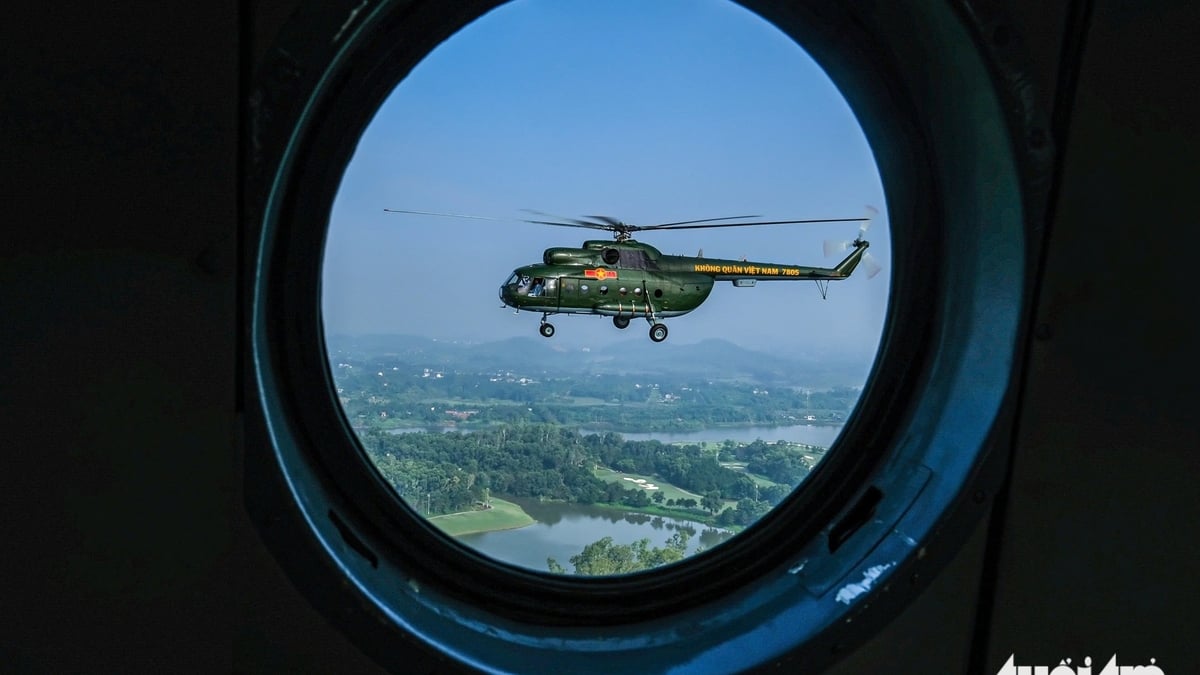

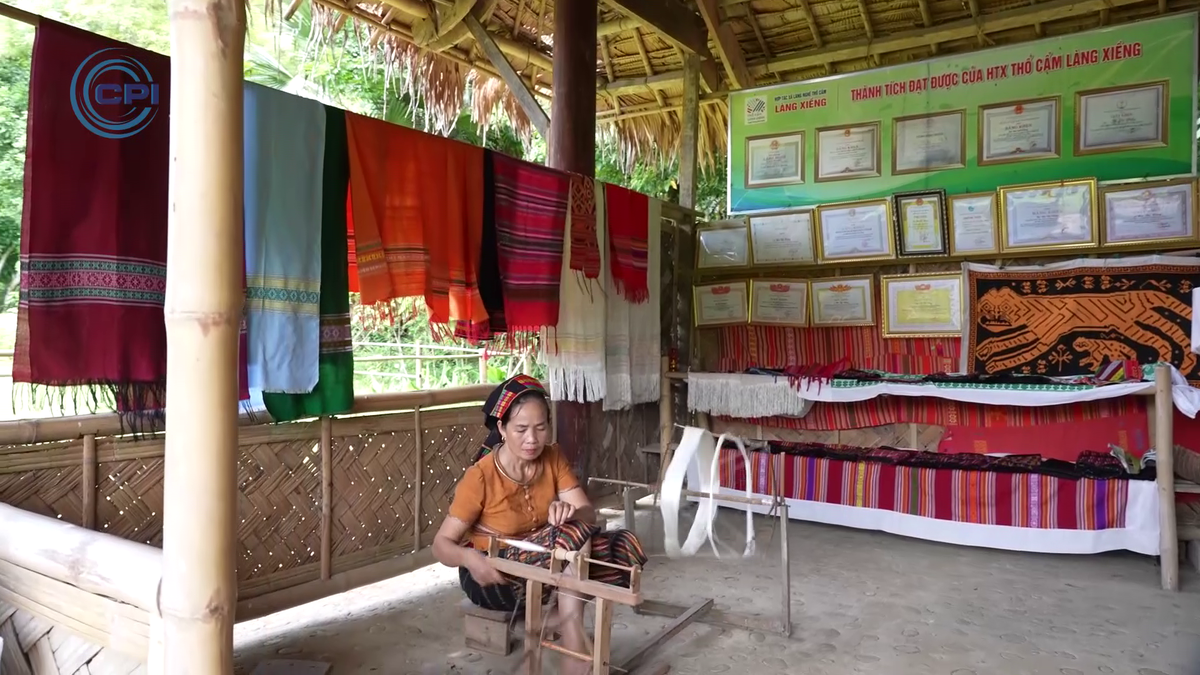
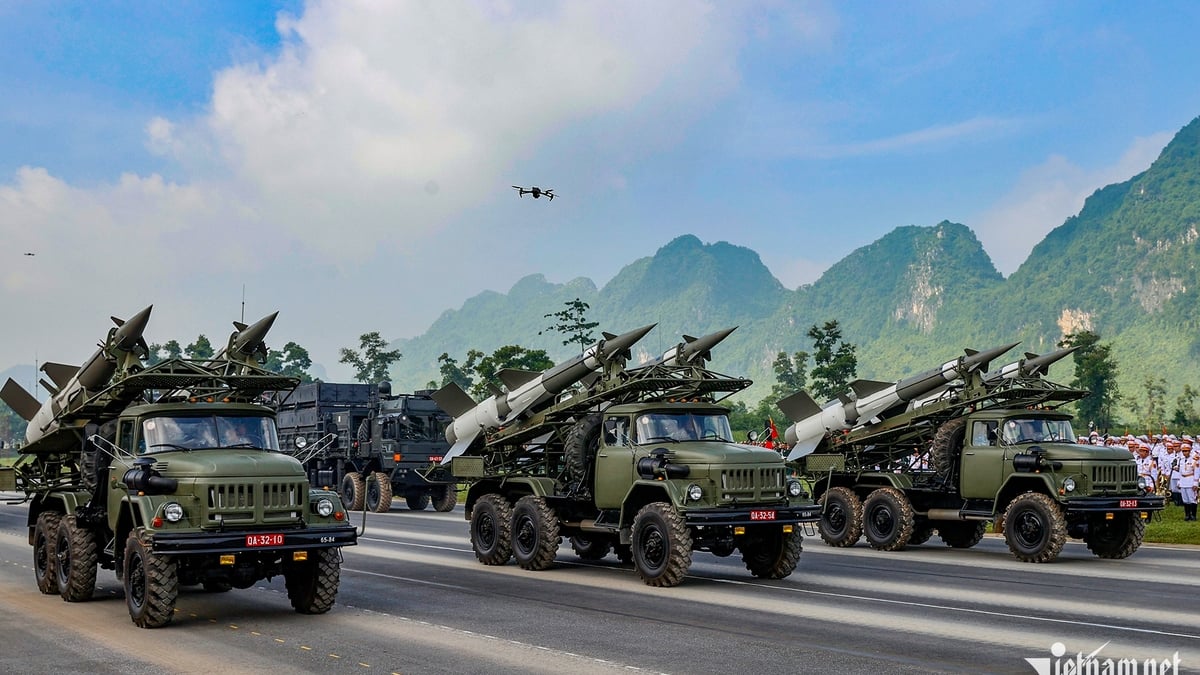

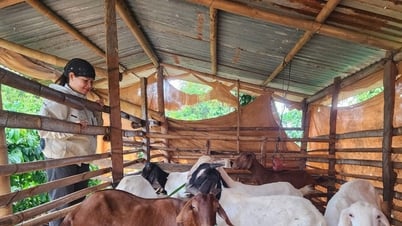

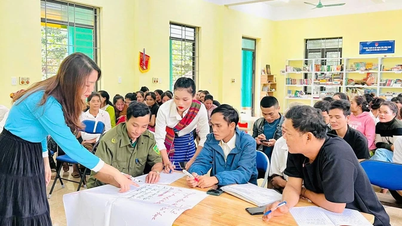



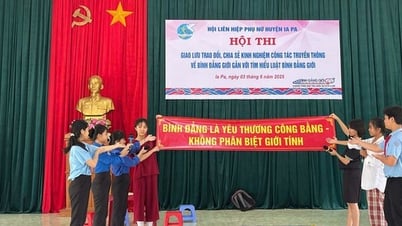

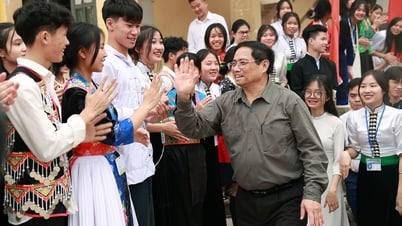






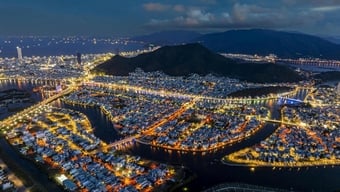
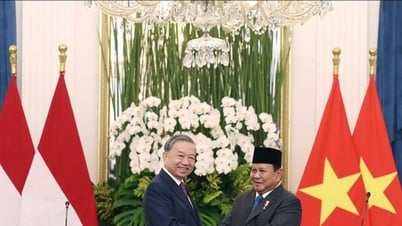
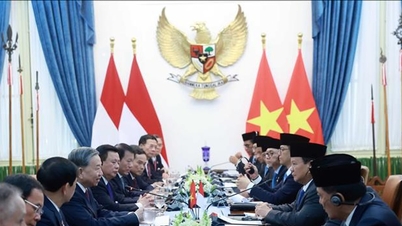

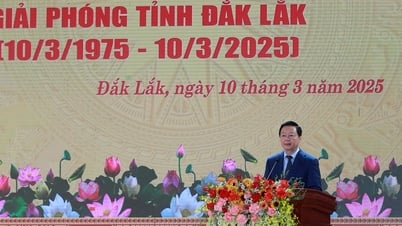
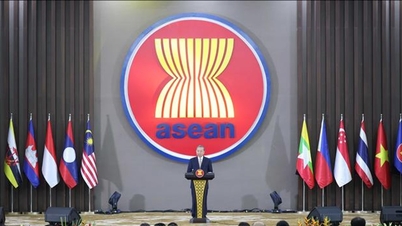
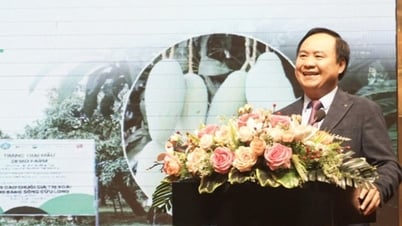

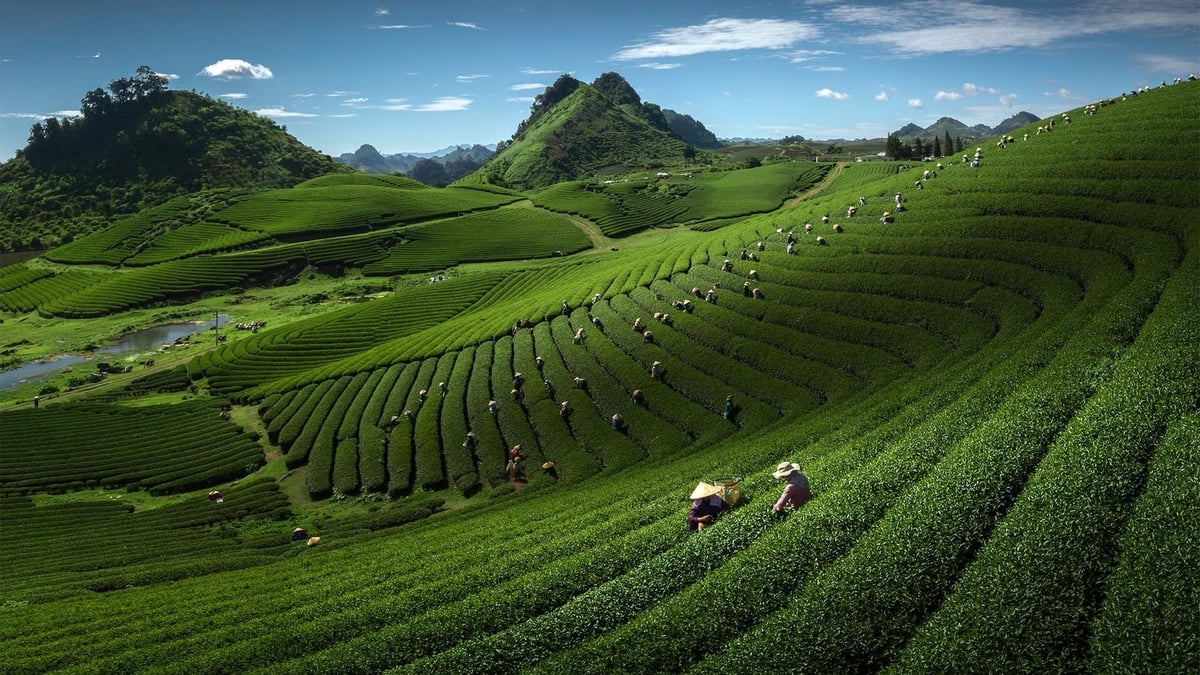




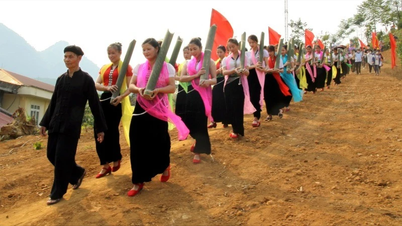


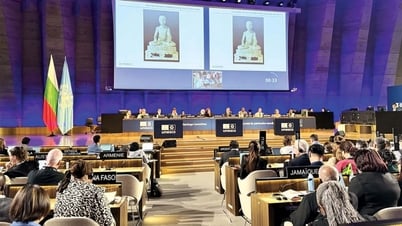

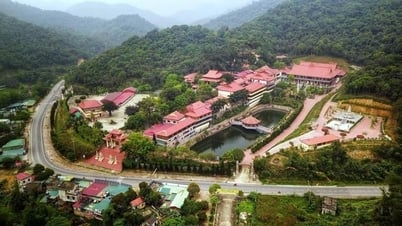








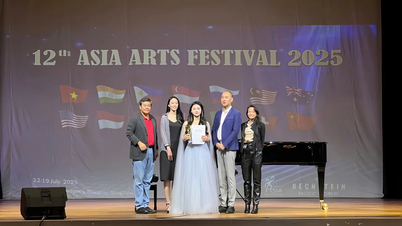

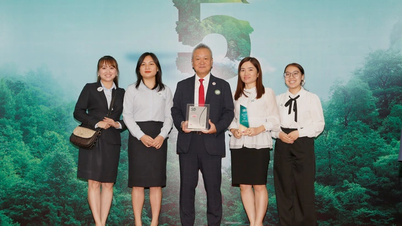
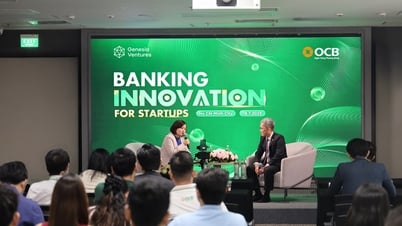


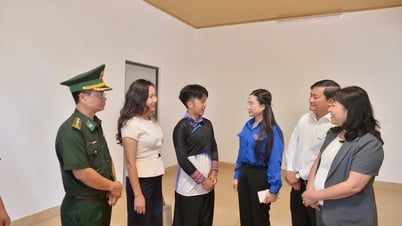
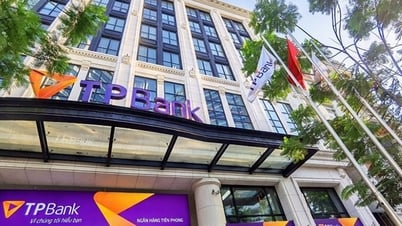

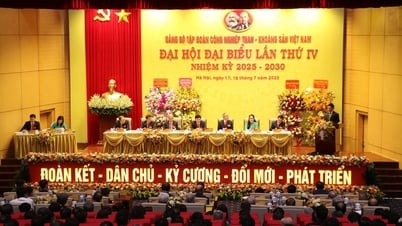
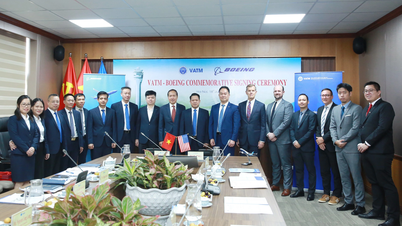



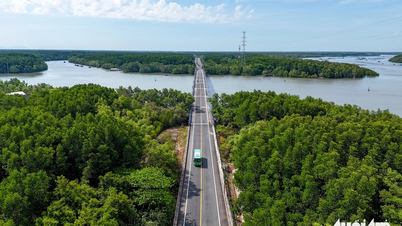
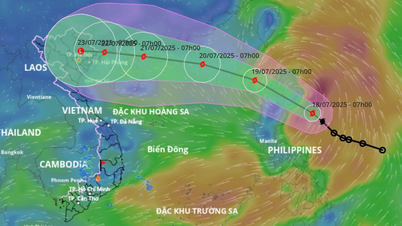
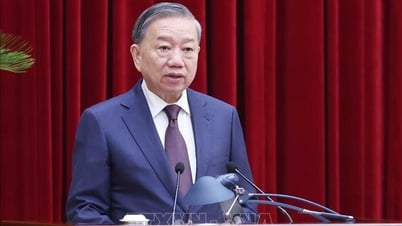

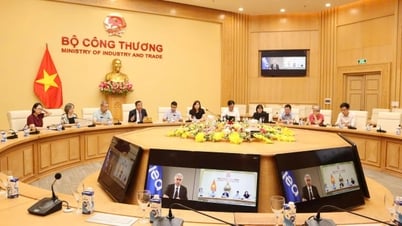

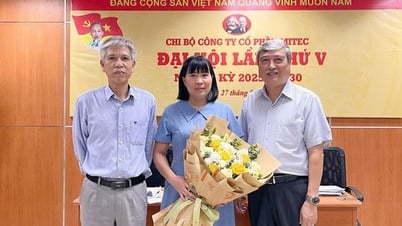


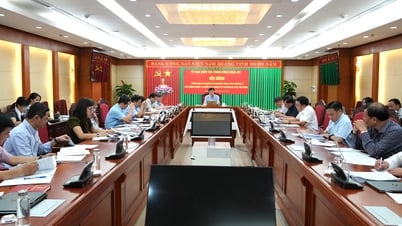



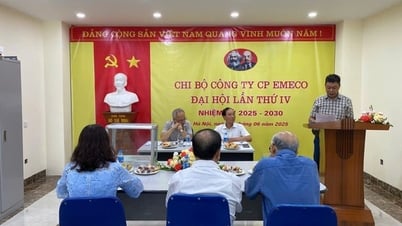
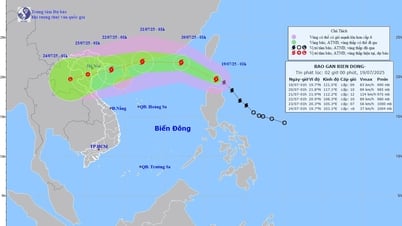
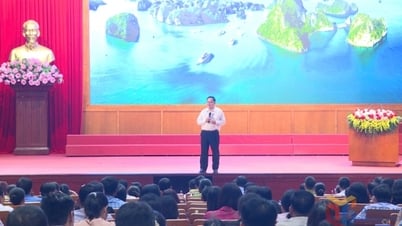
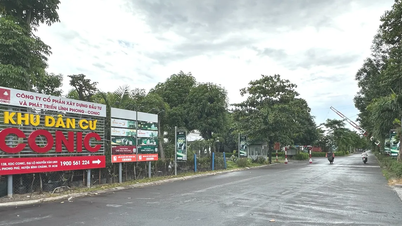

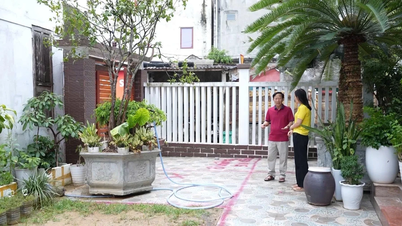
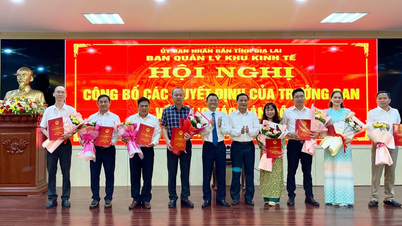

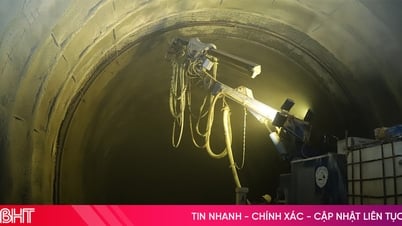




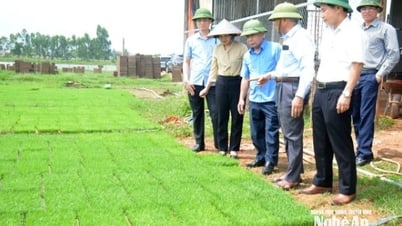


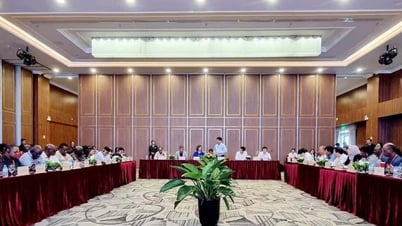

![[Infographic] Năm 2025, 47 sản phẩm đạt OCOP quốc gia](https://vphoto.vietnam.vn/thumb/402x226/vietnam/resource/IMAGE/2025/7/16/5d672398b0744db3ab920e05db8e5b7d)

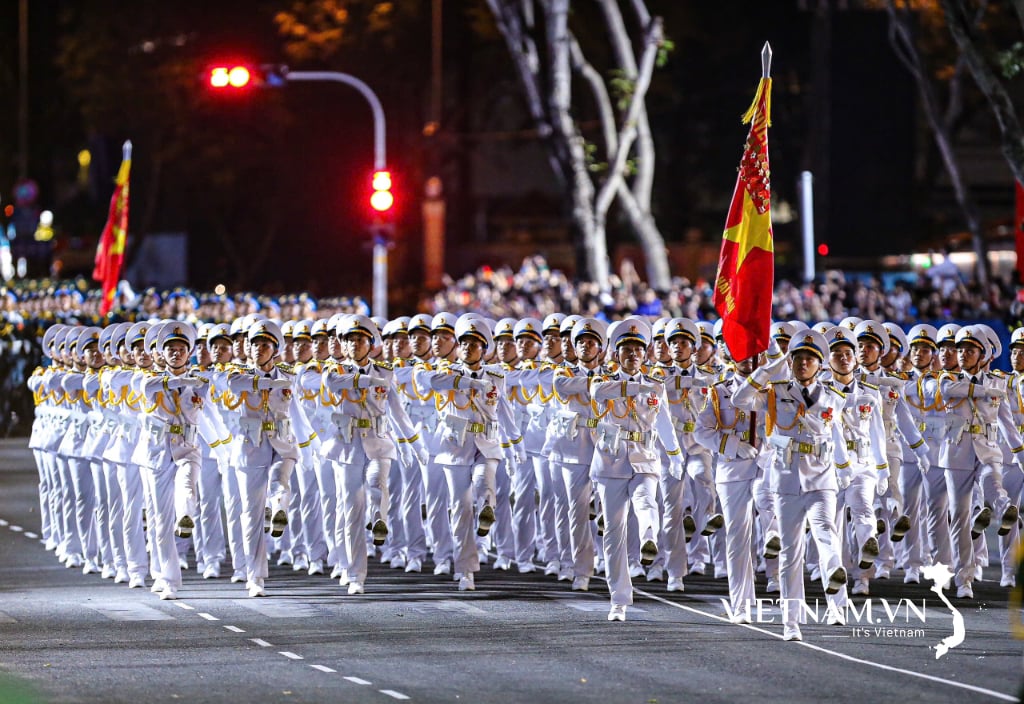



Bình luận (0)